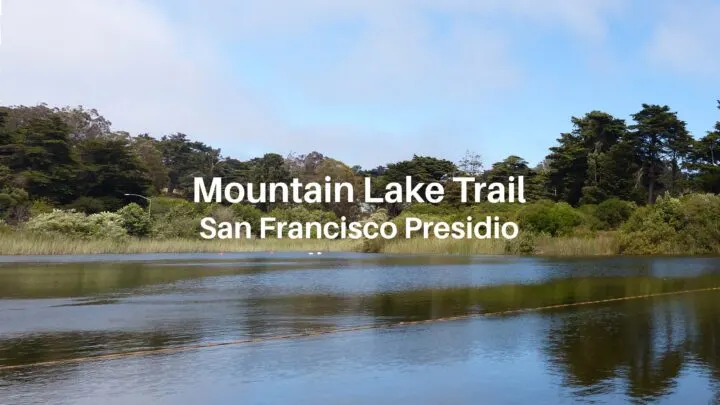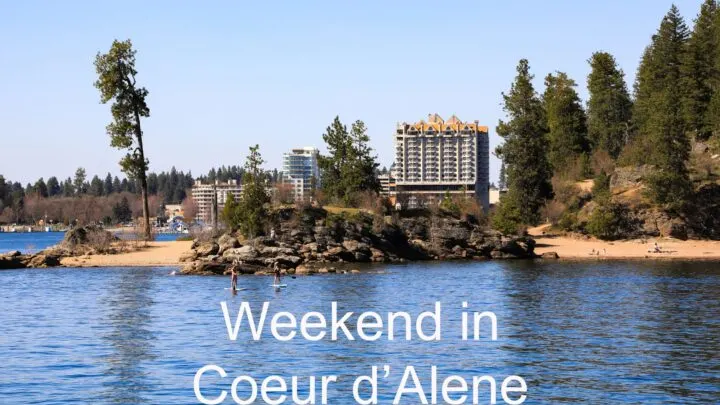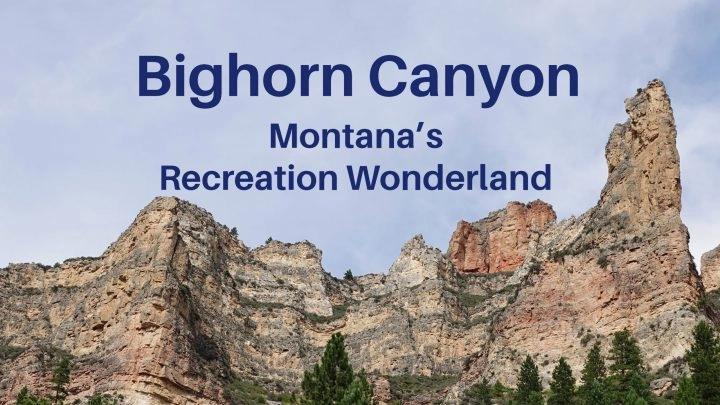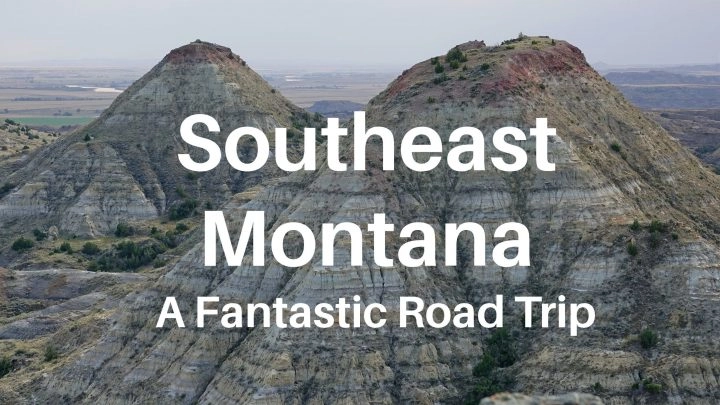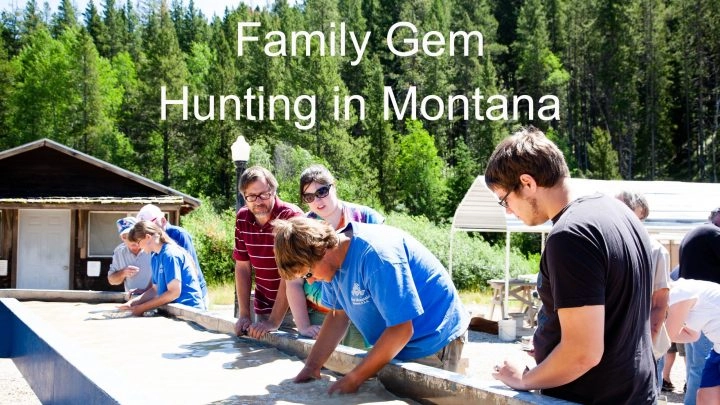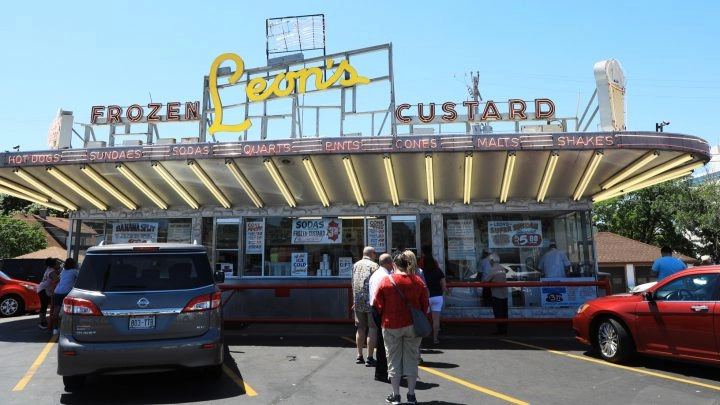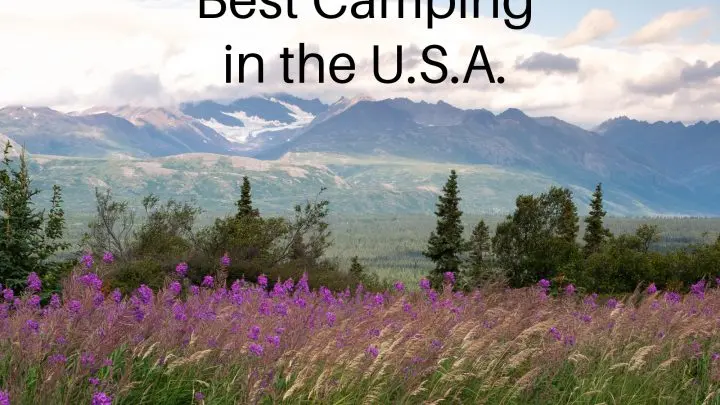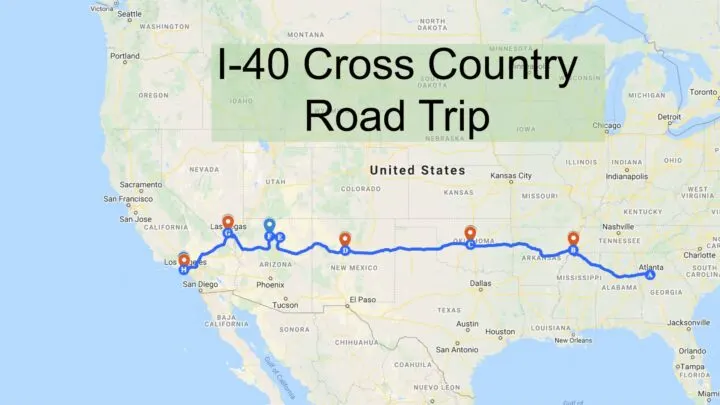The national parks located in the northwestern states, as well as Alaska and Hawaii have so much to offer. Check them out and start planning your next national park adventure.
The National Park Service manages the parks across seven different official regions in the United States. We’ve found, however, that for grouping National Parks, putting them into three regions provides a simpler, logical organization. This article is all about the great northwest and the outliers.
If you are looking for a national park in one of the other states, you can read these articles:
Southwestern National Parks – states include: Arizona, California, Colorado, Nevada, New Mexico, and Utah.
Eastern US National Parks – states include: Michigan, Minnesota, Missouri, North Carolina, Ohio, South Carolina, Tennessee, Virginia, and West Virginia.
The Northwest is known for its lush rain forests, rugged mountains, and crystal clear lakes. We’re also including Hawaii and Alaska in this group so add lava tubes and glaciers to that list of amazing geographical marvels. The national parks in the northwest offer some of the most diverse landscapes and adventure based activities.
Some of the highlights in this region include the fjords and glaciers of Alaska, the deepest lake in the USA which is in Oregon, and of course, Old Faithful, the famous geyser in Wyoming. Wildlife is abundant here as well, with some of the best viewing opportunities in the country. Our favorite activity, whale watching, can be experienced in Alaska, Washington, and Hawaii.
All US National Parks List Map
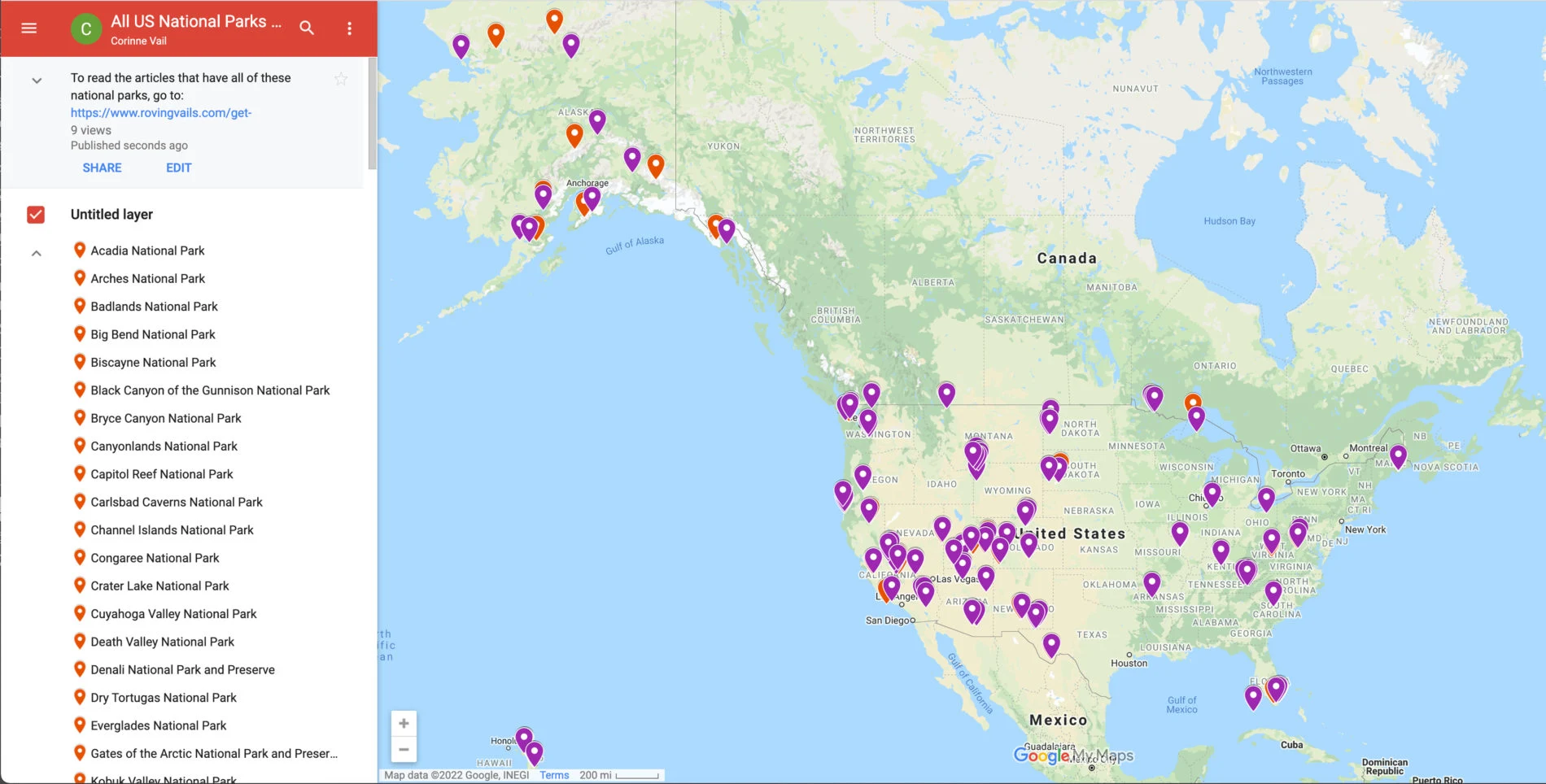
Free National Park Pass for Fourth Graders!
That’s right, fourth graders are invited to visit the National Parks for free. In the US, fourth graders learn all about the geography and history of the different regions in the USA. The National Park Service wants to help and, at the same time, encourage a love of the outdoors. Fourth grade students should visit the Every Kid Outdoors website to get their pass that will allow free entry for them and their families to all National Parks until August of the next year.
Map of Road Trip? or just map
If you are interested in a particular state, you can jump to that state by clicking on these links:
Alaska
Hawaii
Montana
North Dakota
Oregon
South Dakota
Washington
Wyoming
Alaska
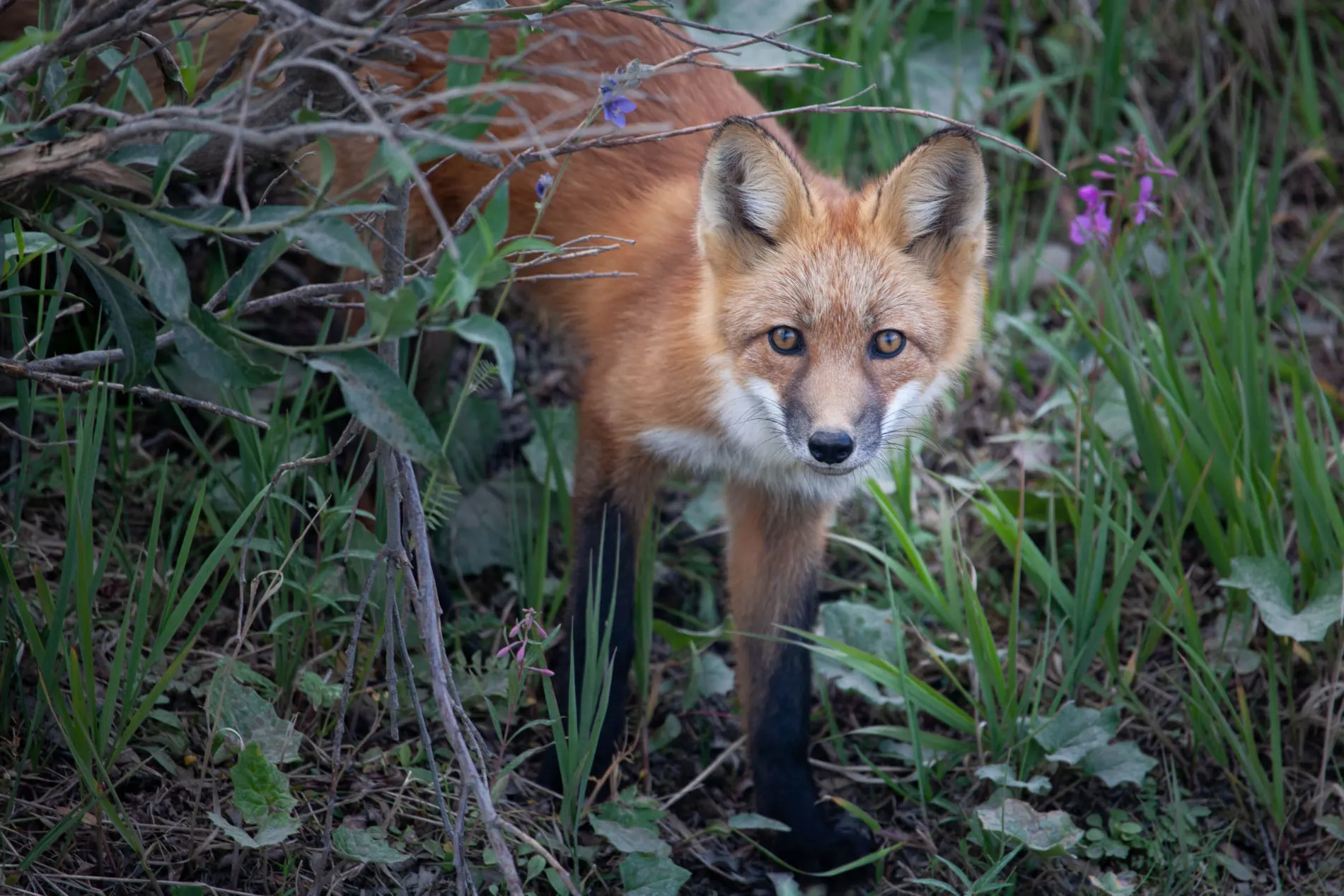
Denali National Park
#1 reason to go: Wildlife! It’s amazing to see moose, ptarmigan, caribou, and even grizzly bears right out your vehicle window.
Best time to go: Summer is best but also busiest. However, that doesn’t seem to bother the wildlife. They seem to know you’re safe.
Should families with kids go? Yes! One of the most fun things for kids is to go to the dog sled kennels and pet the puppies and learn all about the life of a sled dog.
Park Description: One of the most beautiful parks we’ve ever visited Denali National Park is one we go back to over and over. The road through the park doesn’t change, but the weather and the wildlife do, and it’s always exciting. Usually when we go we book one tour on a shuttle bus to Wonder Lake, which takes all day, but the rest of the time, we just explore on our own, picnicking and hiking, and looking for wildlife.
The park is run with sustainability in mind, and therefore private vehicles are only allowed to drive about 13 miles into the park. Yes, it’s limiting, but it’s amazing how much you can see and do in those miles. You can drive to Savage Creek, which we’ve spent hours and hours at, climbing and discovering Dall sheep with their babies.
We’ve also seen just about all the wildlife you can see within our driving range, as well. We’ve certainly seen lots of moose, caribou, porcupine, and even the occasional brown bear. The trick is to drive slowly, keep your eyes open at all times and have those binoculars ready.
There are quite a few campgrounds, three of which you can take your RV into. We’ve always stayed at Riley Creek, which is the largest and closest to all the amenities. However if you are a little adventurous, try one of the others. Camping is really amazing in the park, and there are a couple of lodges. However, it’s easy to find a hotel in nearby Cantwell or even in Fairbanks, where there’s plenty more to do.
For the true adventurer, mountain climbing just might be the ultimate challenge. With the tallest mountain in North America, Denali National Park attracts climbers from around the world. We love it, however, for its incredible wildlife and unparalleled backcountry hiking.
#1 Tip for visiting: The park is huge and busy. If you can stay in the park, you’ll be much happier. That means you need to plan the previous year to get to stay, see, and do everything you want to do.
Other things to do in the area:
- Fairbanks is a fun city, the 2nd largest in Alaska, and has plenty of activities like salmon bakes and gold mining.
- Talkeetna is a small town where the climbers meet up before attempting to summit Denali Mountain. It’s got a great vibe and a small ranger station with climbing exhibits.
Recommended by: Corinne and Jim – Have you listened to our podcast called Streets and Eats – Travel of all kinds?
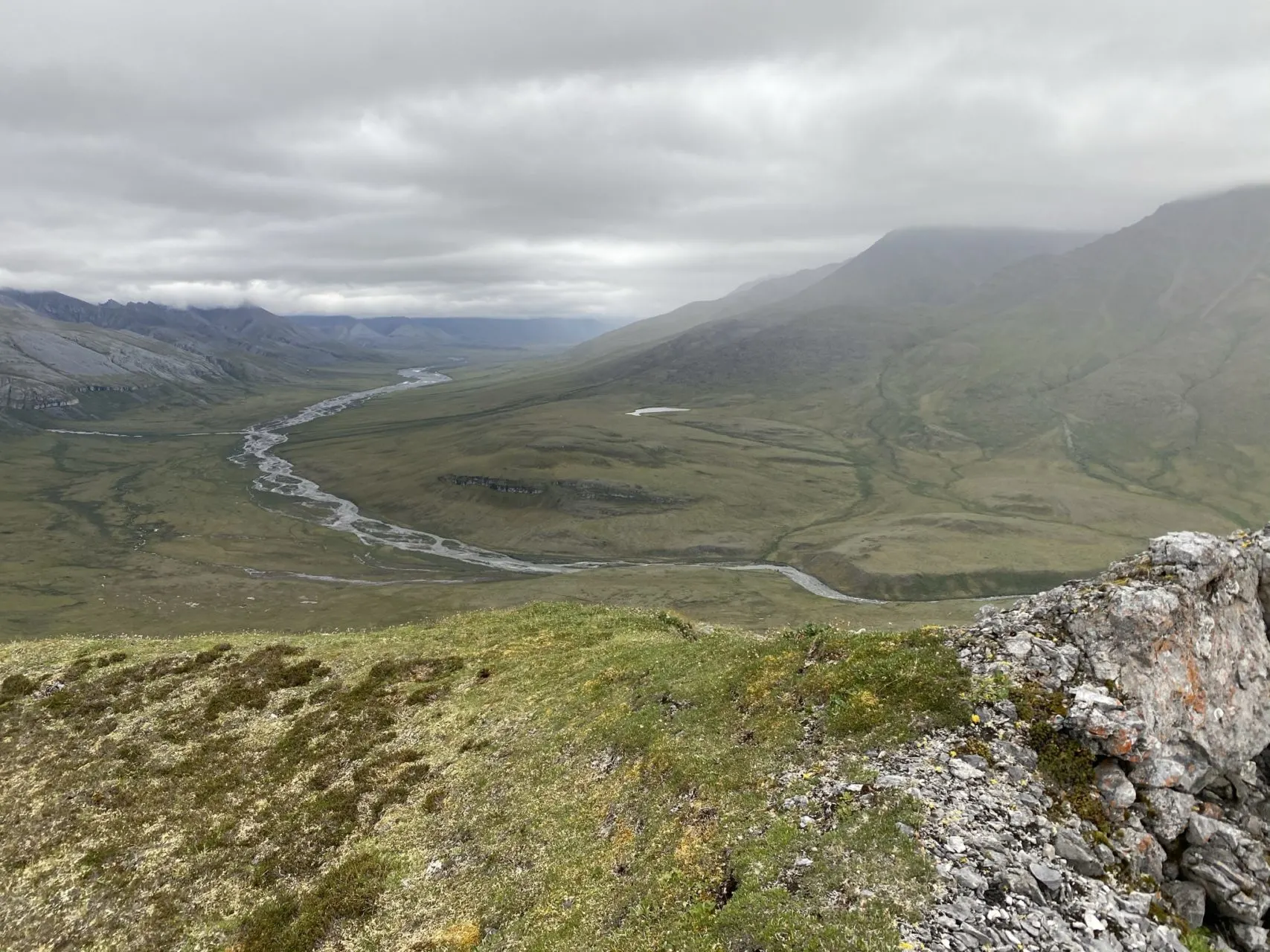
Gates of the Arctic National Park
#1 reason to go: It’s the northernmost national park.
Best time to go: Summer. July or August is really the only time you can access the park.
Should families with kids go? Maybe. It isn’t a great park for families with younger kids. It is a remote park that is all about hiking or paddling and wildlife can be rare.
Park Description: Gates of the Arctic National Park isn’t your typical park. This park is a fly in park which means that you will need to take a bush flight to visit. Bush flights can be arranged from several small Alaskan towns like Kotzebue, Bettles or Coldfoot. These flights are mostly charter and on the costly side. Kotzebue and Bettles are fly-in towns and Coldfoot is only accessible via the Dalton Highway. You can also take the mail plane to Anaktuvuk Pass.
Gates of the Arctic is an undeveloped park. There are no trails or roads and the only accommodations (aka tents) must be brought with you. Multi-day visits to Gates unusually involve base camp hiking, backpacking, or packrafting. The best part of this park is the silence and the feeling of being alone in the wilderness.
#1 Tip for visiting: Bring a sense of fun and be ready for anything.
Recommended by: Jennifer of National Park Obsessed
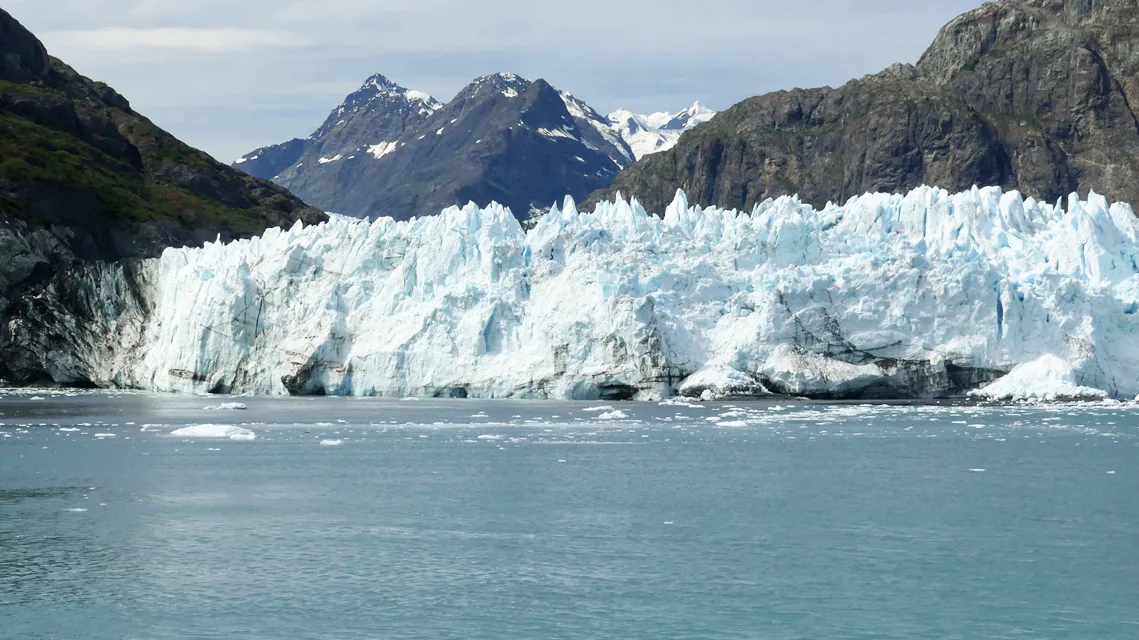
Glacier Bay National Park
#1 reason to go: If you want to see Alaska sea wildlife, there is no better place than Glacier Bay National Park in July!
Best time to go: If you want to see Alaska sea wildlife, there is no better place than Glacier Bay National Park in June or July to see killer and humpback whales both raising their calves.
Should families with kids go? It’s thrilling no matter your age to take a boat trip in Glacier Bay and see the whales, and other sea life.
Park Description: Glacier Bay National Park in Southeast Alaska is wild and remote with North America’s most astonishing scenery and wildlife; it’s a destination to include in your Alaskan travels. From snow-capped mountains, more than 50 striking glaciers to its green and rain forests, as well as varied sea life, the park provides opportunities to experience a vibrant and diverse natural environment.
In our 3 days of exploring, we found that the best way to truly experience the park is on a boat tour of Glacier Bay, which took a full day. On the bay, viewing the sea life was quite exciting. We watched puffins, bald eagles, and murrelets on the bay, looked for bears and moose along the coastline, and saw mountain goats on the rugged cliffs.
At several points we were surrounded by orca whale families; it seemed like hundreds of them. We watched humpback whales staying at the edges of the bay so the killer whales would not capture the calves for a meal.
It’s so interesting to listen for voices of Glacier Bay – sonic blasts of humpback whales, whistles of murrelets and loon cries, splashing salmon, harbor seal growls, bald eagles splashing as they catch a meal, calving glaciers and more.
We experienced all of these on our 10-hour boat cruise in Glacier Bay. If you have more than a day, take time to explore the surrounding forest by hiking an easy coastal trail, an intermediate hike to the estuary, or take an all-day adventure hike.
Hiking provides opportunities to see bear, moose, and various birds. Make sure you talk to a ranger before hiking to ensure you know how to handle a wildlife encounter. Be sure to visit the Una Tribal House (Ancestors’ House) in Bartlett Cove to learn about the Native American Tlingit people who reside around the Bay today.
Hear about their spiritual homeland, culture, and ancestral past in Glacier Bay. The beautiful architecture of their tribal house is best experienced from the inside where you can learn about the traditional practices in a place where the Tlingit gather and reconnect with their spiritual lives. It is adjacent to the Visitor Center.
At the Visitor Center, it’s interesting to see the exhibits, watch the park movie, and listen to ranger talks. You can stay at the lodge or tent camp in the park. There are also several places to stay in Gustavus where we stayed in an AirBnB, which we enjoyed. Whether you have a day for a boat tour or a week to explore land, sea, and the gateway town of Gustavus, your time at Glacier Bay will be a cherished memory.
#1 Tip for visiting: Be sure to advance book a boat tour of Glacier Bay; take the full day trip to see as much of the park and sea life as is possible. Know that you can make special dietary requests for meals during the cruise.
Other things to do in the area:
- We spent a couple of days biking around the tiny quaint town of Gustavus, berry picking, and hiking trails that the bears use. The locals are friendly and it’s nice to stop in the coffee shop for sweets and a chat with a local. We found that several artists, writers, and researchers live on Gustavus, and their works are sold at the gallery in town.
Recommended by: Wendy of Adventurous Retirement
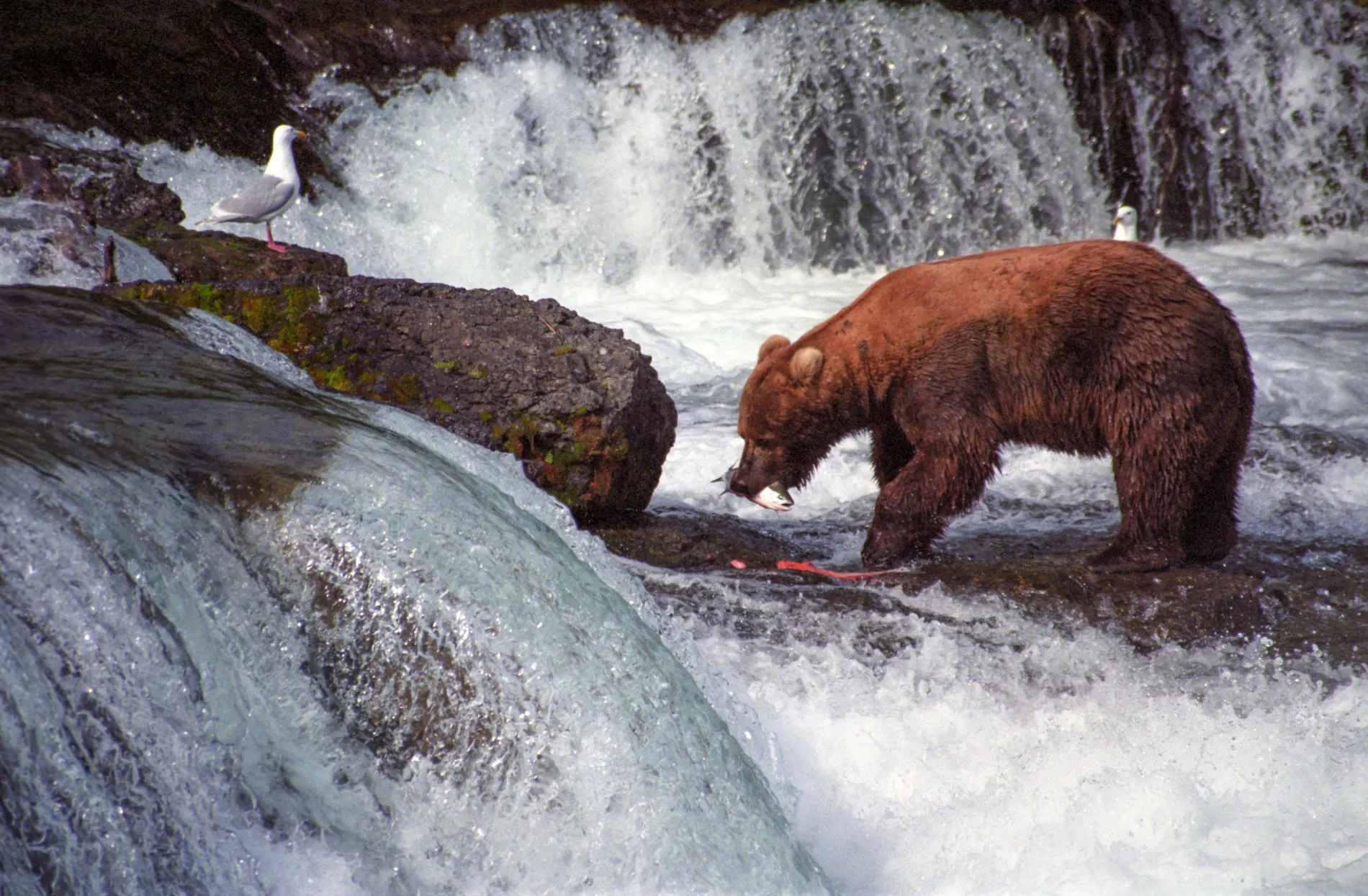
Katmai National Park
#1 reason to go: To see grizzly bears fishing in the Brook’s River falls. It’s a bucket list must-do for any adventurer.
Best time to go: July! Yes, midsummer is when you want to go to Katmai. The salmon are running and the bears are fattening up. There are plenty of cubs, and the scenery is stunning.
Should families with kids go? Maybe. We did. We took our nine and eleven year old daughters. Of course they were well versed in traipsing around bear country, and we never let them out of our sight.
Park Description: Getting to Brooks Lodge in Katmai National Park is an adventure in itself. It’s not for the faint of heart. To begin with, you need to book a commercial flight to King Salmon. If you have the inclination, you can spend maybe a day here, but honestly it’s easier just to get to your small flight and get ready to go. You see, you have to take a float plane and land on Naknek Lake where you will then drive up on land.
From there you are accompanied to the Brooks Ranger Station where you will get a lesson in bear safety. This is super important, and certainly makes you feel better about having grizzlies all around you. After you are fully briefed, you can pitch your tent or head to the lodge. After that all you have to do is go watch bears. It’s amazing.
Most people go to Katmai for the bear viewing, but no less impressive is the Valley of 10,000 Smokes which you can take a tour to on one of the days you are visiting. It’s an all day outing where you can hike, see amazing vistas, and we even did a little four-wheeling through a river. It was a lot of fun!
#1 Tip for visiting: Hang out at the viewing centers and just see the bears parading by you and living their lives. We saw no less than 14 grizzlies on the very first day…and then we lost count.
Other things to do in the area:
- Go fishing, hiking, rafting or boating, and of course take a tour of the Valley of 10,000 Smokes.
Recommended by: Corinne and Jim
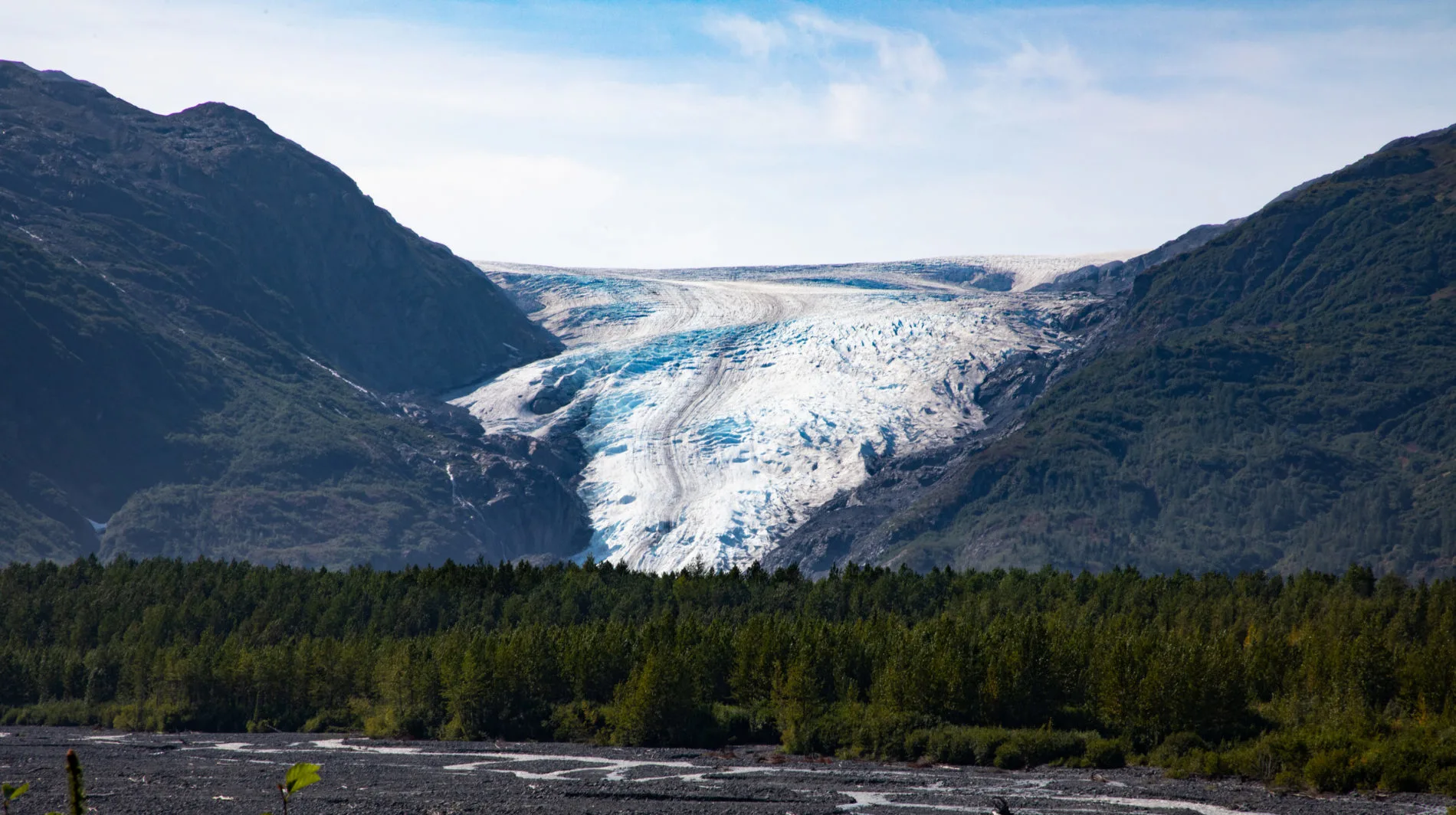
Kenai Fjords National Park
#1 reason to go: To see a glacier and some spectacular marine wildlife.
Best time to go: Summer. It’s darn cold and hard to see any other part of the year.
Should families with kids go? Yes! Learning about glaciers in school is one thing, but to go and see them for yourself is a priceless educational moment.
Park Description: Seward is the main base to explore Kenai Fjords National Park. A small coastal city with lots to do, you will definitely want to plan at least three days there. One of the first places to go is the visitor center downtown, which will give you lots of information about the area and how best to see it.
The next “must-do” is a visit to Exit Glacier, which is a short ride outside of town. You can hike pretty close to the glacier on your own, but if you take a guided tour, you can get even closer. The visitor center is full of information, and it’s startling to see the year markers where the glacier came to, and how much it’s receded.
After hiking and enjoying the blue ice of Exit Glacier you should go on a Kenai Fjords boat tour. There are plenty to choose from, but plan on spending as much time as you can on the water. The marine life is abundant and amazing. We’ve seen whales, seals, sea lions, and so many birds!
You can also go kayaking or deep-sea fishing out of Seward, all of which are fun and awe-inspiring. You and your family will love it. There are plenty of camping parks, but there are also a couple of really nice hotels in Seward as well. One that we love to stay at is the Harbor 360, located right on the water.
#1 Tip for visiting: Take a six or seven hour boat tour of the Kenai Fjords, the longer the tour, the more things you can explore. It’s not a time to scrimp, go big!
Other things to do in the area:
- Seward is full of fun things to do, great restaurants, and lots of opportunities for kayaking or fishing.
- On the way down from Anchorage, stop off at Portage Glacier Visitor Center.
- Other spots that you might want to visit in the area are: Whittier, Kenai, or Homer. All with their own charms.
Recommended by: Jim and Corinne – Click here to join our private Facebook group – Road Trips Sharing Q&A.
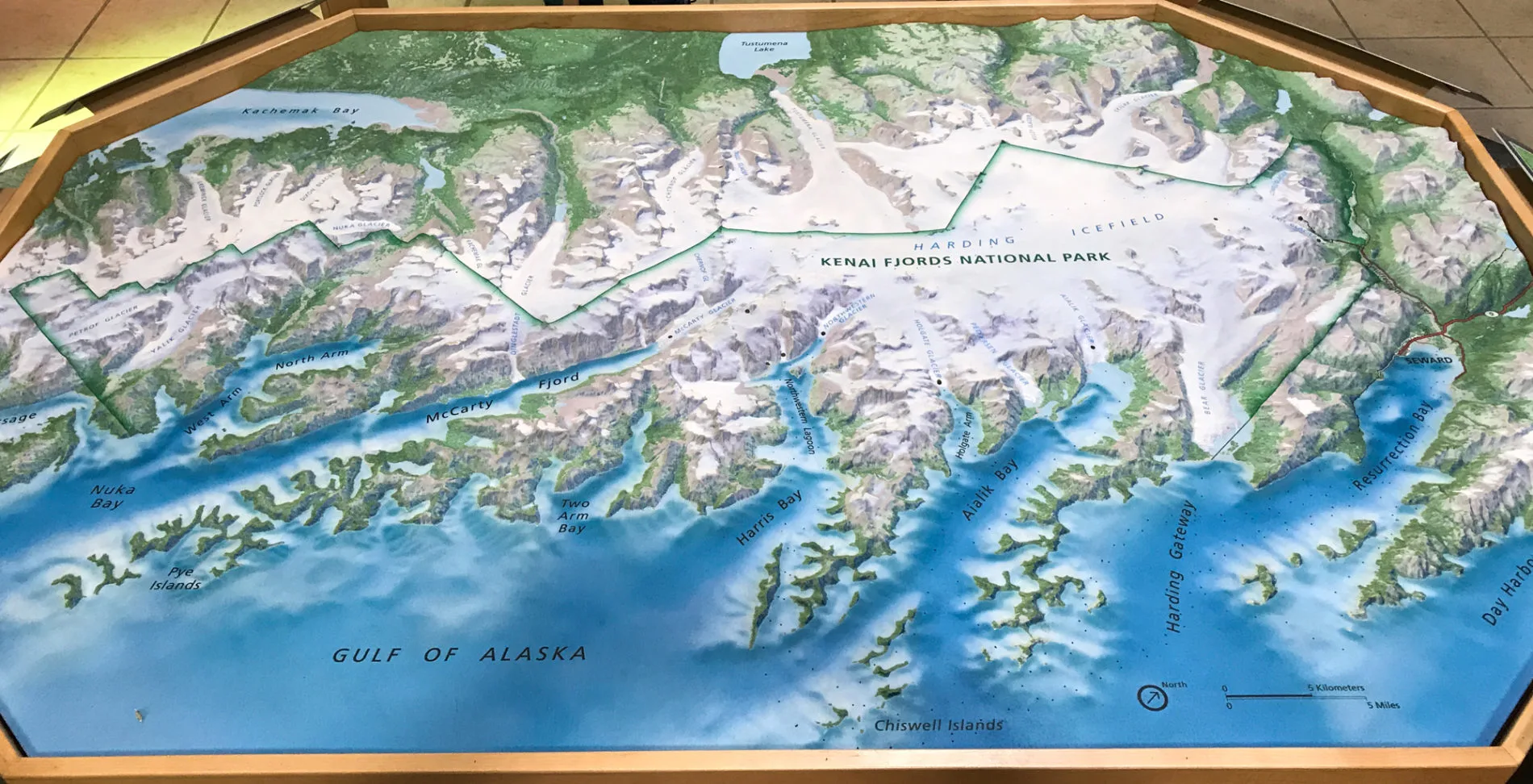
Kobuk Valley National Park
#1 reason to go: It is home to the northernmost dune field.
Best time to go: July and August, because it’s really the only time it is accessible.
Should families with kids go? Maybe. Kids can spend time playing on the sand dunes but given the expense of getting out there it, might be best to wait until they are older.
Park Description: Like Gates of the Arctic, Kobuk Valley National Park is a fly in park. It is often visited in conjunction with Gates as part of a day trip when a bush pilot takes guests to visit both parks. These flights include a little bit of time in each park but are an all day flight.
There are no roads or trails in Kobuk Valley. The only way to spend the night in the park is to camp. Visitors to Kobuk are treated to a spectacular dune field that is unlike anything else you will see in Alaska. The dune field is the northernmost and one of the largest fields in North America.
While the sand is every changing, Kobuk is home to some of the oldest archaeological sites in North America. Onion Portage on the Kobuk River has been a caribou hunting spot for almost 10,000 years. In the fall, the caribou still cross at the portage.
#1 Tip for visiting: Pray that the weather cooperates.
Recommended by: Jennifer of National Park Obsessed
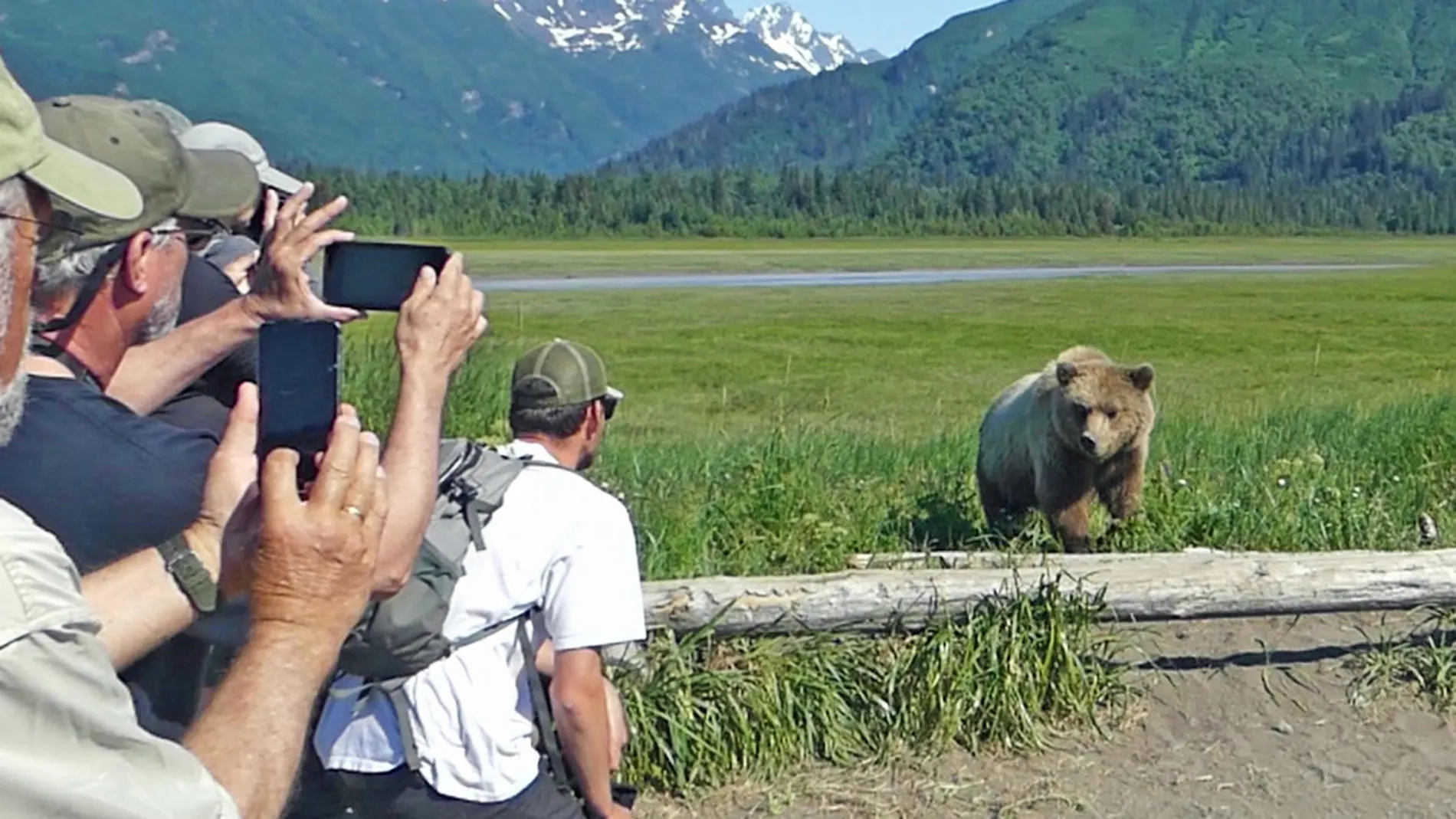
Lake Clark National Park
#1 reason to go: Lake Clark National Park is a scenic, remote land mass where you can see grizzlies in the wild, salmon runs, glaciers, volcanoes and their steam vents.
Best time to go: Late May and early June is the ideal time to see the sow grizzlies and their cubs fattening up on clams, plants, grasses, and berries; although the season to visit Lake Clark is May to September.
Should families with kids go? Maybe. If families go with a guide, and children follow the guidelines, visiting Lake Clark is an opportunity of a lifetime for everyone.
Park Description: Lake Clark is a stunningly remote land mass accessible only by float plane or boat, and offers an unmatched experience to novice and experienced adventurers. Whether spending a day or a week at Lake Clark, the experience will be breathtaking and exhilarating!
Our visit was a planned day trip on a flightsee from Homer, Alaska, on the Kenai Peninsula in Southwest Alaska. We were most excited to see the grizzlies up close. Once deplaning on the beach, we headed to the meadows with our pilot/guide and spotted several sows and cubs feeding on the sedge.
Our several short hikes to various areas across the beaches and through woods treated us to close observation of the life of grizzly bears – grizzlies digging for clams at the water’s edge, teenage grizzlies playing in the fields, young cubs playing and interacting with their mother, as well as a male protecting his playmate from another male.
We felt quite safe with our guides, although, at any one time there were 14-20 grizzlies around us. Lake Clark is also home to alpine tundra, glaciers, glacial lakes, major salmon-bearing rivers, and two volcanoes – Mount Redoubt and Mount Iliamna.
Mount Redoubt is active and last erupted in 2009. You can see its steam vents on a flightsee to Lake Clark, which we were excited to see on our flight returning from Lake Clark. If you want to hike or backpack, be sure to visit Lake Clark’s Field Headquarters and Visitor Center in Port Alsworth.
While we stayed in an RV park in Homer, there are also a good number of fine hotels to choose from as well. And, if you want to spend an overnight or a week, there are lodges, BnBs, and rustic camping available in Lake Clark.
#1 Tip for visiting: The best way to see, learn about, and stay safe in the park is by going on a flightsee with a knowledgeable, experienced guide to see the grizzlies, combined with a volcano and glacier flightsee.
Other things to do in the area:
- Since the park is remote and only accessible by boat or small plane, the things you can do are in the park, and include tundra hiking, backpacking and camping, bear viewing, fishing, boat trips, kayaking, and river rafting, and viewing salmon runs in Bristol Bay.
Recommended by: Wendy of Adventurous Retirement
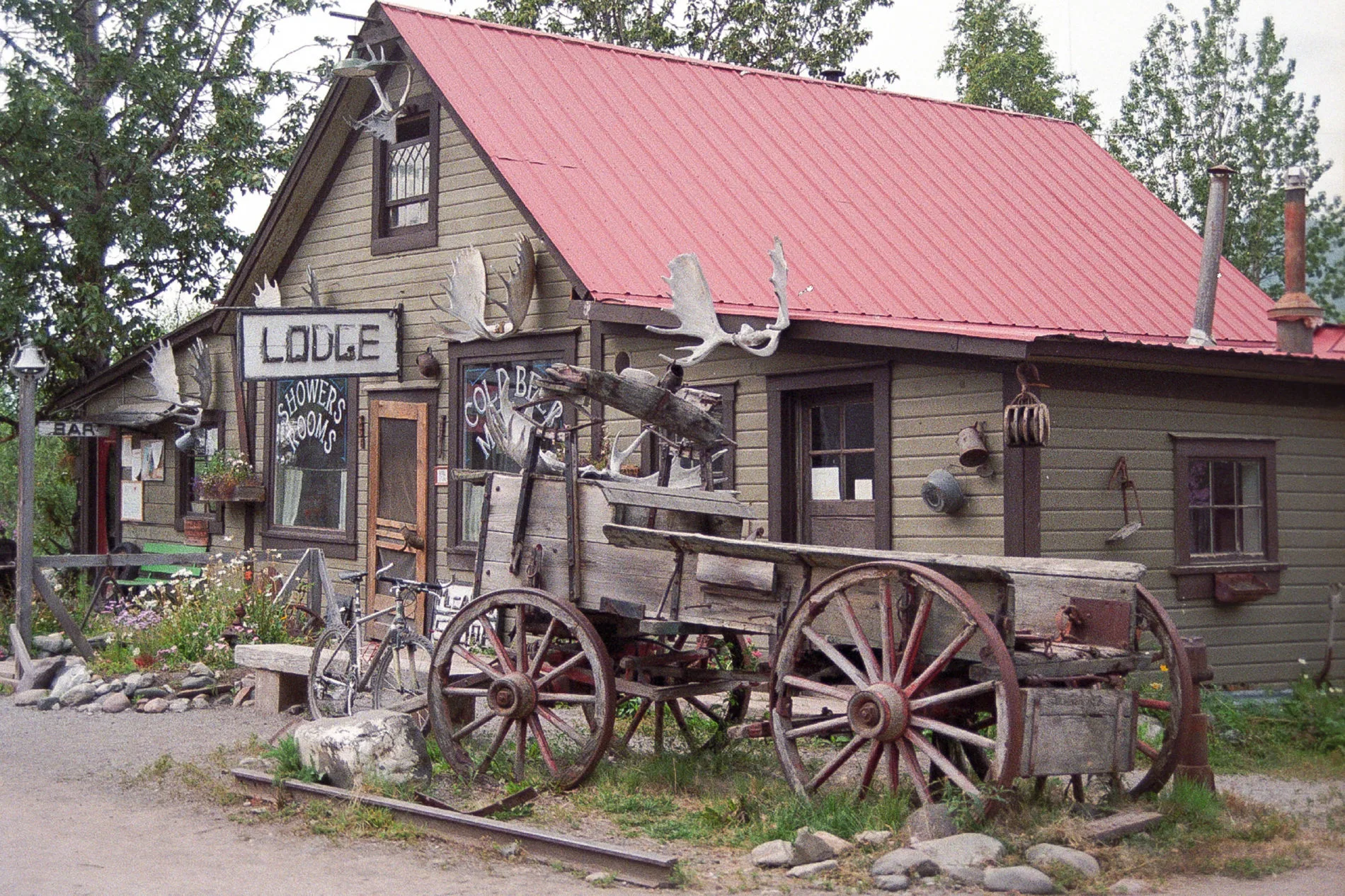
Wrangell-St. Elias National Park
#1 reason to go: You’ll want to visit Kennicott Mine and take the hand crake trolley across the river.
Best time to go: Summer, hands down. In late July, the berries are ripe, yum!
Should families with kids go? Sure. We did, and they loved it. There’s plenty of things to keep them busy, and wandering around the mine was a lot of fun.
Park Description: Getting to Kennicott Mine and Wrangell St. Elias National Park is half of the adventure. You must drive on gravel, and watch out for railroad ties and other hazards, as well as any wildlife. The McCarthy road is 61 miles long, starting in Chitina (you don’t pronounce the second i), and it’s not even part of the park. It just gets you there, and it takes a good 7 – 8 hours of driving just from that point.
Once you get to Kennicott, you have to take a hand crank gondola over the river to get into the park. By far, that’s the most fun the kids had. They wanted to do it over and over.
This part of the park is dedicated to the gold mine and its history, which is fun to read about and see all the stuff left over during their mass exodus.
#1 Tip for visiting: This park is not for the faint of heart, or for someone who is rushing time. It’s beautiful, the mine is cool, but only go if you have the time to enjoy it.
Other things to do in the area:
- Drive part of the Alaska Highway
- See wildlife, moose are especially plentiful
Recommended by: Corinne and Jim
Hawaii
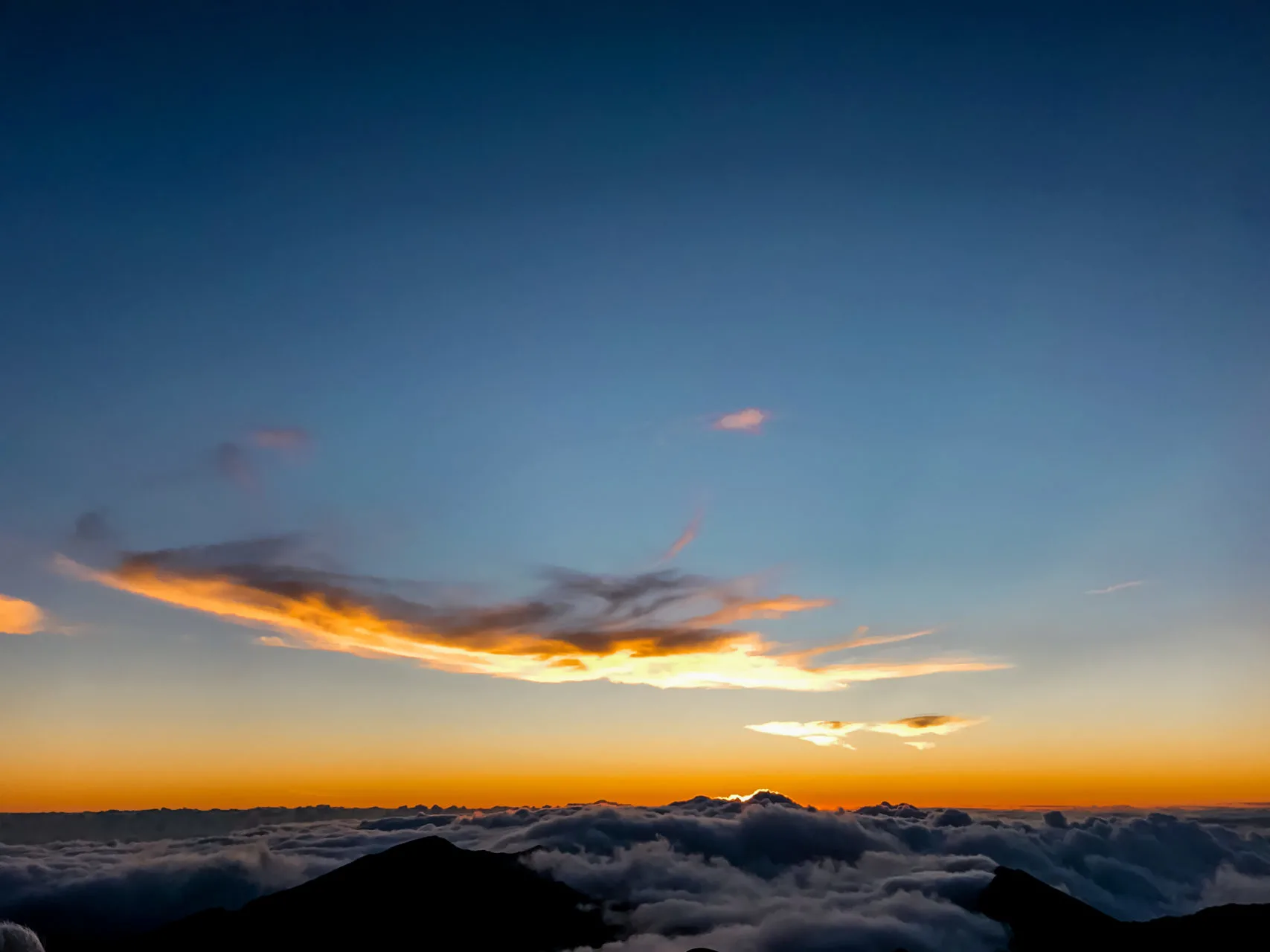
Haleakala National Park
#1 reason to go: The park is over 30,000 acres on a giant Dormant Volcano!
Best time to go: Maui is good to visit year round, but if you are looking to avoid crowds, consider shoulder months of April, May, September, and October
Should families with kids go? Yes! It is great for families who like the outdoors and don’t mind long car rides.
Park Description: Haleakala National Park is easily one of the most unique USA parks. With over 30,000 acres, the park offers tons to do making it a must-see for any Maui, Hawaii itinerary. The park itself is actually a giant dormant volcano that offers sweeping ocean views, hiking trails, unique wildlife, and waterfalls.
One of the most popular activities to do in Haleakala National Park is to see the summit sunrise and sunset. The summit area sits at an elevation of over 10,000 ft making for an amazing perspective. This experience books up quickly, so you will want to make sure you make your reservations with the National Park Service in advance.
Additionally, make sure to check out the Kīpahulu District which is located on the road to Hana highway. From the Kīpahulu Visitor Center, you can enjoy lush green jungle landscapes with ocean views. Take a walk on the Pipiwai Trail that has access to several waterfalls, the most notable being the Waimoku Falls at 400 feet.
Next, you can stroll around the Seven Sacred Pools Loop Trail which gives you insight into native history along the way. Furthermore, you can even go swimming in the Sacred Pools when conditions allow! The park is usually visited in day trips from other cities in Maui, however you can camp at the National Park. We stayed in Lahaina, Maui, and drove. Generally people will spend one day driving the road to Hana and include the Kīpahulu Visitor Center, and then the do the Summit a different day.
#1 Tip for visiting: Make a reservation for the Sunrise summit. It is incredible!
Other things to do in the area:
- Drive the Road to Hana which offers tons to do including a black sand beach, lava caves, bamboo forests, and waterfalls.
Recommended by: Sam of Find Love & Travel
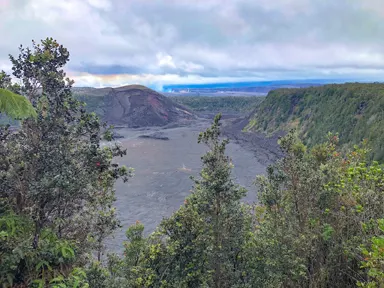
Hawaii Volcanoes National Park
#1 reason to go: The unique volcanic landscape with its craters, lava rocks, steam vents and lush vegetation makes for a sensational experience.
Best time to go: Go during spring or fall when it’s not too hot. Winter might be great temperature-wise but you’ll likely have to put up with a shower once in a while.
Should families with kids go? Yes! This is a great National Park to visit for active families who love a good hike.
Park Description: Hawaii Volcanoes National Park encompasses two active volcanoes, the Mauna Loa and the Kilauea. The entrance is located near the southern tip of Hawaii Island. You can easily drive there from Hilo, like we did, or from Kailua-Kona, which takes a bit longer. Alternatively, you could spend the night nearby, at one of the rainforest retreats and cozy cabins in Volcano Village.
Our favorite activity is hiking the Kilauea Iki trail. “Iki” is Hawaiian for “little” and refers to a side crater of the Kilauea volcano. The trail first leads through the lush rainforest that covers this side crater’s rim. It then descends down the nearly vertical wall to the floor of this pit crater. The steep and rocky climb down is pretty challenging. But then, as soon as you reach the solidified crater lake, you’ll be amazed by the unique surroundings.
You can feel the heat of the cracked crater floor and see the steam come through the vents. It’s incredibly spectacular to find yourself inside the crater of an active volcano and it was the highlight of our Big Island trip.
Other popular things to do in Hawaii Volcanoes NP are visiting the Thurston Lava Tube, seeing the sulphur banks and driving the Chain of Craters Road. It’s important to note that Hawaii Volcanoes NP is considered sacred ground in Hawaiian culture, which is why moving rocks or standing on them is disrespectful.
#1 Tip for visiting: Drive down to the Visitors Center to check the latest conditions before exploring the park. Kilauea is an active volcano resulting in volcanic gases that, depending on the wind conditions, can make some areas too dangerous to explore.
Other things to do in the area:
- Head to the Punalu’u black sand beach
- Indulge in a malasada from the Punalu’u Bake Shop
- Visit the Kula Kai Caverns
Recommended by: Sarah of CosmopoliClan
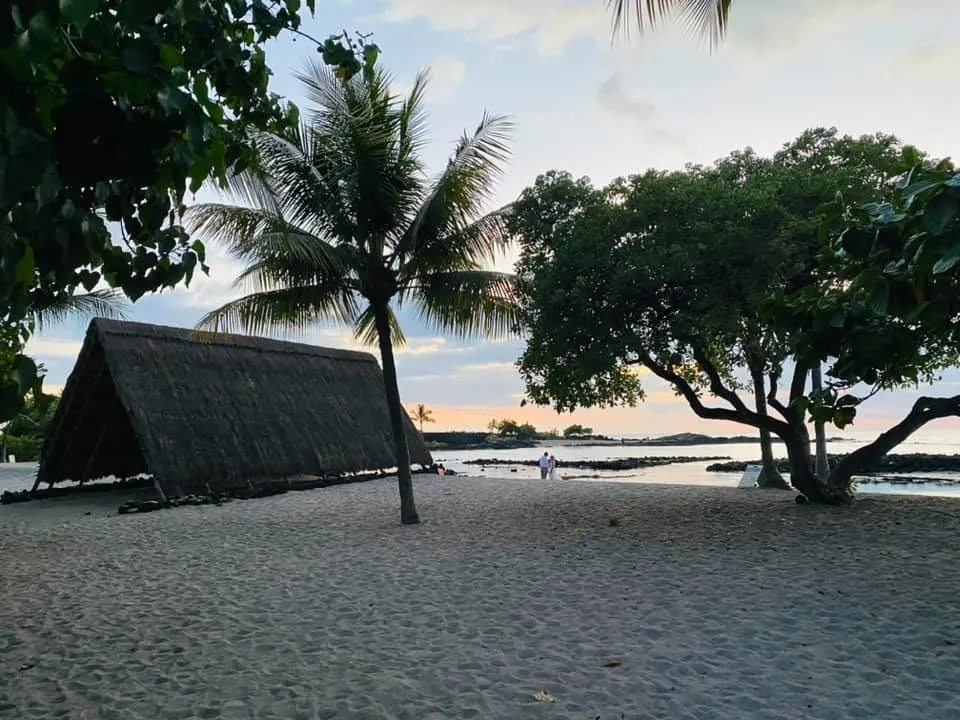
Kaloko Honokohau National Historical Park – Hawaii
#1 reason to go: Ancient Hawaii settlement, hiking, coastlines and relics to explore in the park.
Best time to go: This is perfect to visit year round, best in late afternoons.
Should families with kids go? Yes! It’s a great place to visit with family to enjoy the beach and check out the main monuments and historic sites in the area.
Park Description: Kaloko-Honokōhau National Historical Park is one of the national parks on the Big Island that is truly historic with a variety of monuments and ancient temples, or heaui, that makes it an important park to visit. Located on the Kona side of the Big Island, it includes the historical landmark settlement of Honokohau and the important fishponds that comprise the Koloko section of the park.
The settlement at Honokohau includes important temples, or heaui, fish ponds, house platforms, petroglyphs and stone walls. There are easy trails to follow from the visitors center to the main fish ponds and then to the Honokohau settlement. There’s a nice beach area you can enjoy and it is typically filled with honu turtles, tropical fish and other wildlife. Plenty of native birds can also be spotted in the area.
Exploring the fishponds and enjoying all the nature around the national park, doing some of the short hikes and even taking a swim in the protected waters makes this the perfect spot to enjoy the park grounds and some gorgeous coastline views of the area.
The Kaloko-Honokohau National Historic Park is less crowded and less known than some of the other national parks on the island but an easy 5 mile drive from downtown Kona where you can find plenty of hotels to stay while exploring the area.
#1 Tip for visiting: Later part of the afternoon to sunset when it is cooler and the light changes and is better for photography especially when the skies changes to sunset colors and making this a more beautiful landscape to visit and photograph.
Other things to do in the area:
- Visit Kailua Kona town
- Go on a cruise and snorkeling charter
- Find some nice local beaches like Kua Bay or Makalawena
Recommended by: Noel of This Hawaii Life
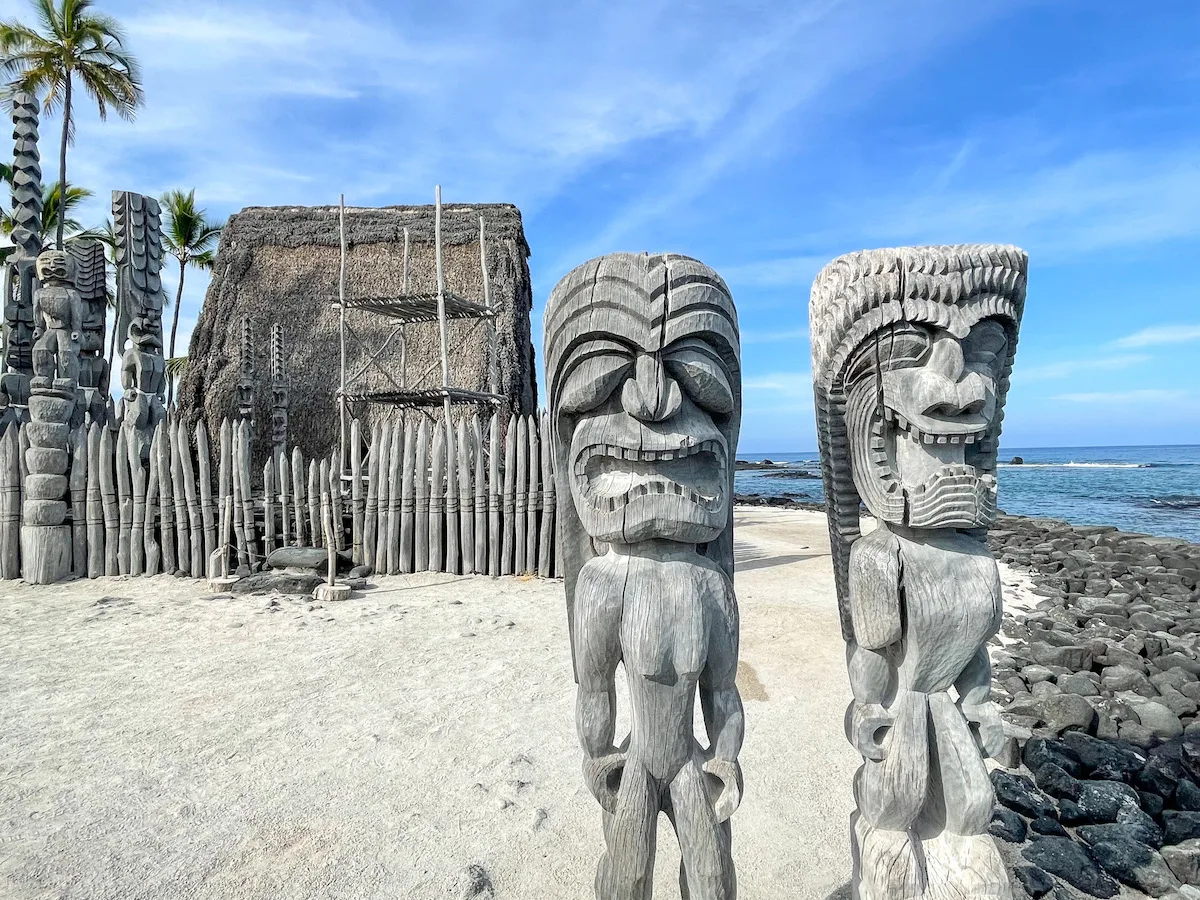
Pu’uhonua o Honaunau National Historical Park – Hawaii
#1 reason to go: If you’re interested in Hawaiian history and culture, a visit to Pu’uhonua o Honaunau National Historical Park is a must.
Best time to go: It’s best to visit as soon as the park opens up and before it gets too hot out.
Should families with kids go? Yes! This is one of the best Hawaii national parks for families because there are lots of cool places to explore, historical replica buildings, and tiki statues. Plus, they participate in the Junior Ranger program so your kids can earn a badge.
Park Description: Pu’uhonua o Honaunau National Historical Park is only about 1 hour away from Kona. We stopped by here on our way to Hawaii Volcanoes National Park, which is about 90 minutes away.
Our favorite part of the park was definitely seeing the tiki statues and the replica buildings. These are some of the coolest photo spots on the Big Island of Hawaii. We used the National Park Service app to learn more about the different areas.
Something that all visitors should know is that Pu’uhonua o Honaunau National Historical Park is known as the “Place of Refuge.” This means that people in Old Hawaii could come here to escape persecution or avoid war. If you download the Shaka app, they will give a lot of examples of who came here. Basically, people were safe as long as they stayed within the boundaries of the park.
It’s a really beautiful area, but it would be treacherous to swim to from other parts of the island because of all the lava rocks. You’ll definitely want to know a bit of the history ahead of time. There also isn’t much shade available, so I recommend wearing lots of sunscreen, a sun hat, and packing water bottles for everyone.
#1 Tip for visiting: I recommend wearing sturdy shoes when exploring Pu’uhonua o Honaunau National Historical Park. There are lots of lava rocks to climb on and you’ll want to protect your feet.
Other things to do in the area:
- Visiting the Painted Church
- Snorkeling at Two Step Beach
- Lunch at Super J’s Kaaloa (get the lau lau)!
- Cultural ATV ride at Aloha Adventure Farm (it’s incredible)!
Recommended by: Marcie Cheung of Hawaii Travel with Kids
Idaho
Yellowstone National Park
Montana
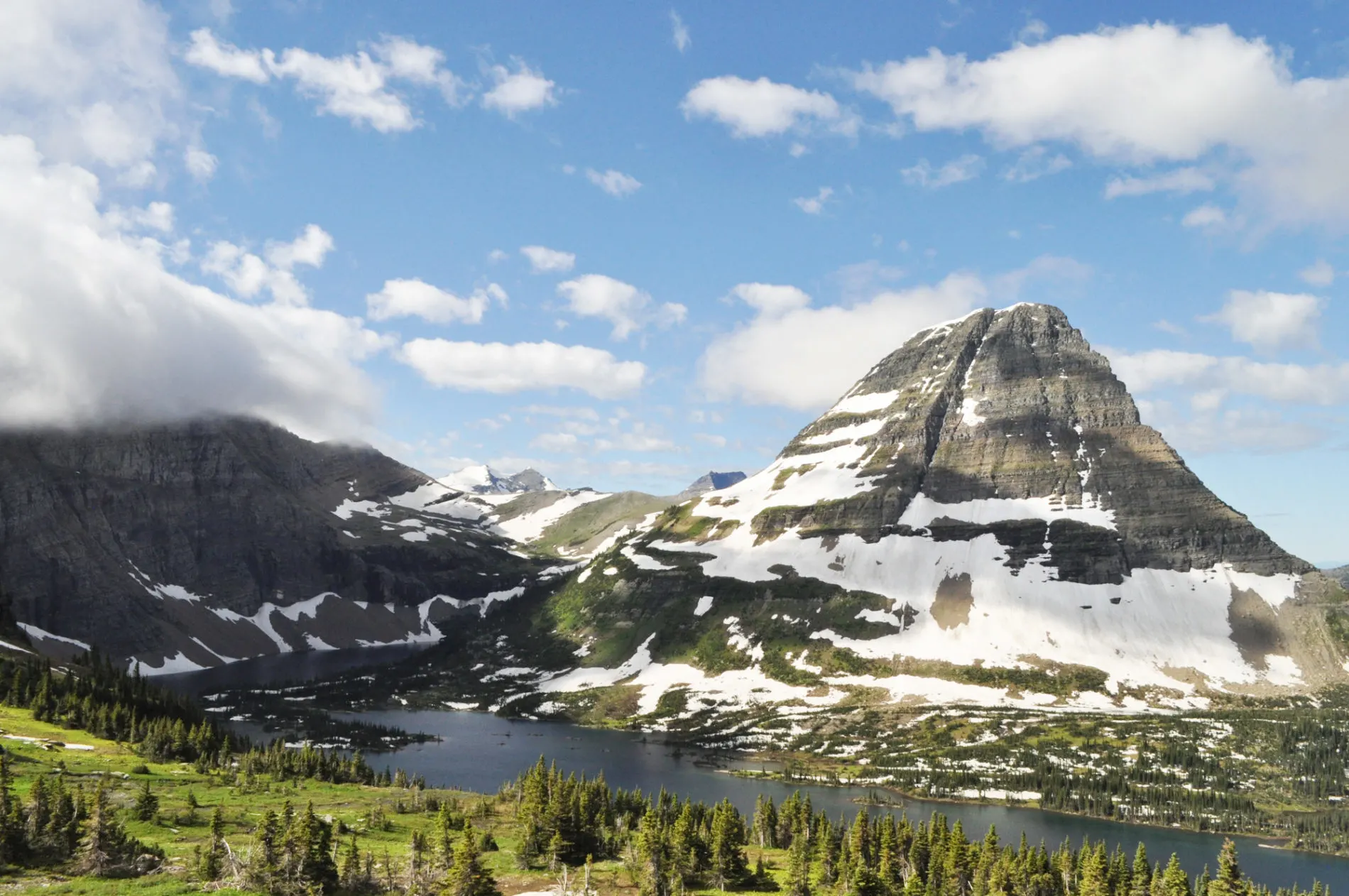
Glacier National Park
#1 reason to go: The stunning beauty of the park is a truly indescribable experience; it’s a place you absolutely must see in person to believe.
Best time to go: Visit Glacier National Park from July through September to access the most impressive part of the park, the Going-to-the-Sun Road.
Should families with kids go? Yes! It’s an excellent park for families. With hikes easy enough for kids, they’ll get to experience splashing in waterfalls and the most gorgeous alpine lakes this country has to offer.
Park Description: Glacier National Park in Montana is hands down one of the most incredible places on earth. You can’t believe it’s beauty unless you see it in person. The majestic peaks meet the most picturesque lakes, creating the perfect mountain scenes.
The most popular area of the park is the Going-to-the-Sun Road. Accessing it from the eastern or western entrance, it’s on a reservation system so be sure to make arrangements early.
One of the best ways to see the park’s features is by hiking. A few top trails include the Avalanche Lake Trail, Virginia Falls Trail, Hidden Lake Trail, Highline Trail and Grinnell Lake Trail.
My family stayed at a small vacation rental property near the west entrance of the park, in Coram, Montana. With direct access to the Going-to-the-Sun Road, we soaked in the reflective Lake McDonald as the kids giggled and turned blue from the frigid water.
We spent a week hiking to the best viewpoints in the park, including Hidden Lake Overlook, Saint Mary Lake and many others. With a park as grand as Glacier National Park, it’s impossible to choose a favorite part. Unless of course, all of it can be an answer.
#1 Tip for visiting: Glacier National Park is huge! Have a plan ready but be flexible in case parking lots are full and you have to improvise.
Other things to do in the area:
- Just outside of the park in West Glacier, enjoy delicious tacos at the food truck park, or try the huckleberry ice cream.
- If you’re up for adventure, take a whitewater rafting tour on the rivers in the surrounding area.
- For more lake time, visit Whitefish Lake for boating and jet skiing or beach time.
Recommended by: Nikki of She Saves She Travels
Yellowstone National Park
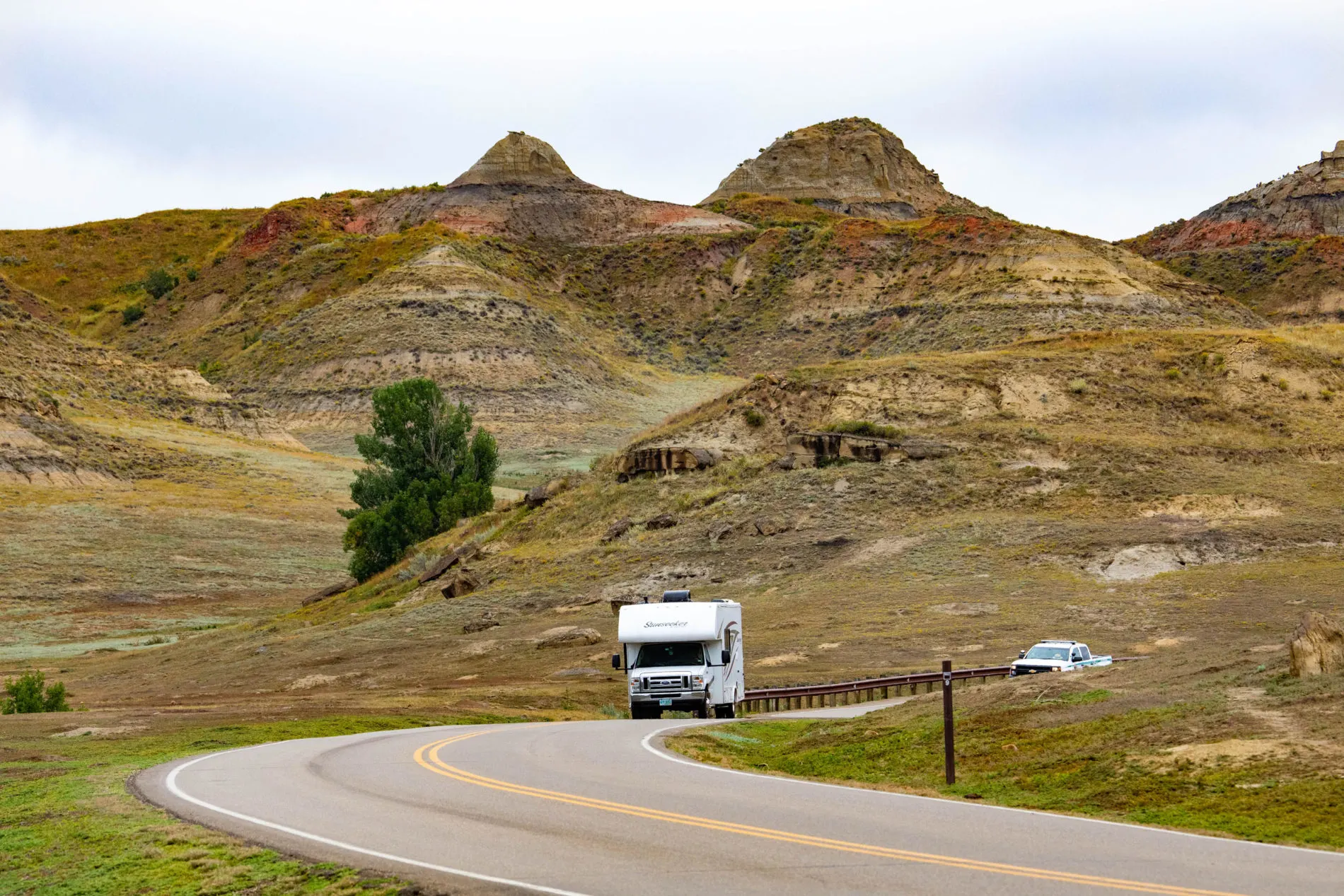
North Dakota
Theodore Roosevelt National Park
#1 reason to go: The bison and the badlands are amazing!
Best time to go: Late spring to early fall are great times to go, before the weather gets too bad.
Should families with kids go? Absolutely! The park has plenty of short hikes, gorgeous overlooks, and great exhibits at the visitor’s centers.
Theodore Roosevelt National Park is one of the best reasons to hightail it to one of the least visited stated in the USA, North Dakota. With far fewer crowds than the Badlands in South Dakota or even Yellowstone, you can see bison and beautiful landscapes and so much more.
Driving through the park, there’s tons of wildlife. While we were there, we saw hundreds of bison, only feet from our van, wild horses, the cutest prairie dogs, and even a wolf. We couldn’t have been more pleased.
Wildlife isn’t the only thing to see, though, the undulating hills, especially near the winding river. There are almost 50 miles of driving through the scenery, with plenty of stops for some hikes, short and long.
Some of our favorite hikes were the Ridgeline Trail, Painted Canyon Nature Trail, and the Buckhorn Trail where you go right by the prairie dog town.
#1 Tip for visiting: If you go during the summer, make sure to bring a good hat and sunscreen, and of course, lots of water. There is not much shade on any of the trails.
Other things to do in the area:
- Medora is a cute little western town and has some really cool shops
- The Cowboy Hall of Fame
- Medora Musical and before the show eat at the Pitchfork Fondue
Recommended by: Corinne and Jim – Join our private Facebook group – 50 States 50 Weekends
Oregon
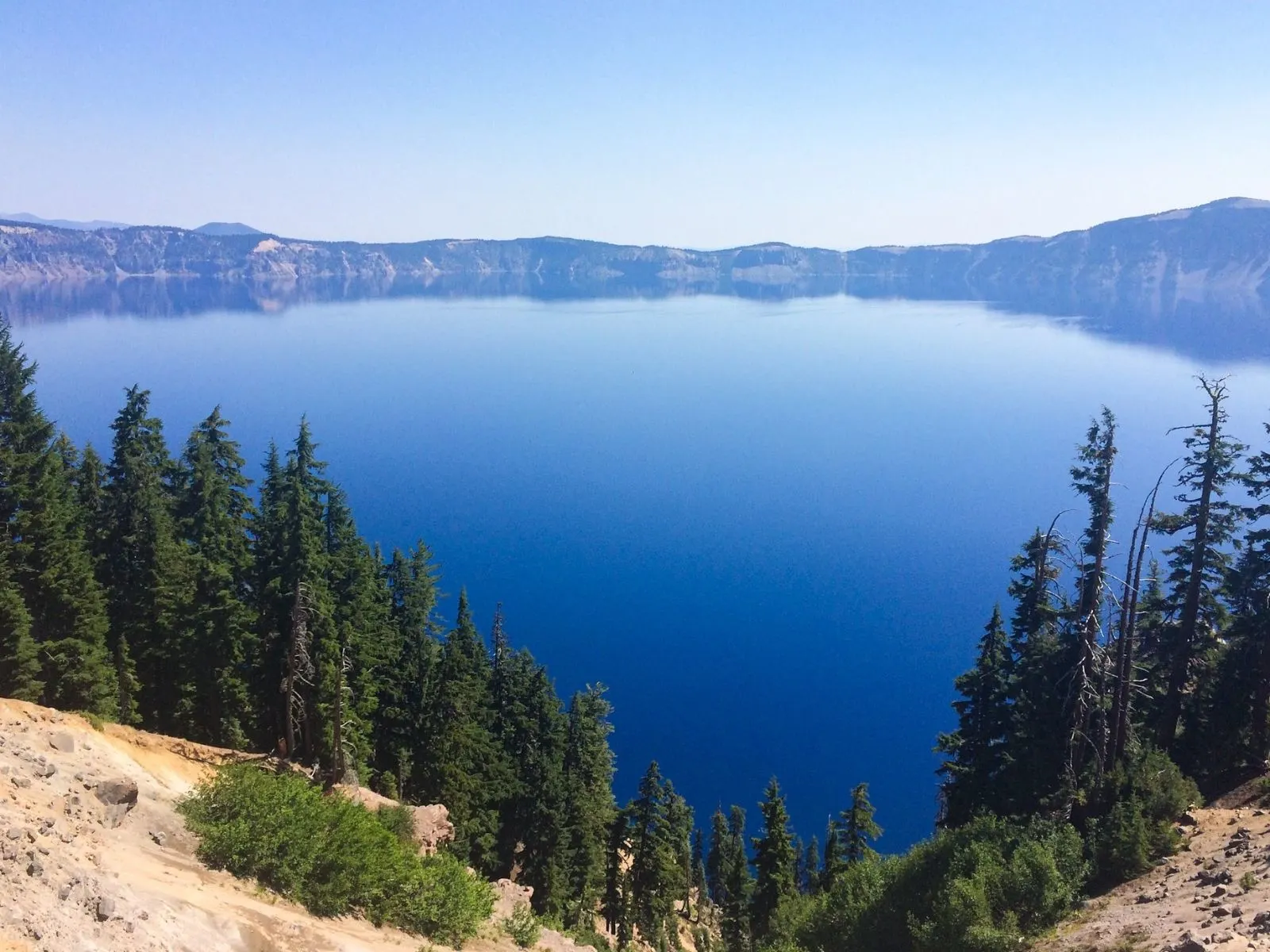
Crater Lake National Park
#1 reason to go: The iconic crystal clear blue waters of Crater Lake, fed by snow melt and with no natural outlet, make this lake one of the most beautiful lakes in the United States.
Best time to go: While Crater Lake is open all year, the best time of year to visit is during the summer months.
Should families with kids go? Yes! Crater Lake is a great park to visit with families, as there are plenty of easy hikes around the lake. Additionally, kids can learn about the geographical history of the area, since the lake itself was formed from the eruption of Mount Mazama over 7,000 years ago.
Park Description: Located in southern Oregon, Crater Lake National Park rests in the crater of an ancient volcano. The surrounding forests are filled with trails that visitors can hike.
During our family’s visit to Crater Lake, we enjoyed hiking along the Garfield Peak Trail. It gave us some great views of the lake and also of Wizard Island, which sits in the middle of the lake.
There are two lodges that visitors can stay at: Crater Lake Lodge and the Cabins at Mazama Village. There are also two campgrounds that visitors can reserve online. However, there are also plenty of lodging and camping options outside of the national park.
When we visited Crater Lake, our family chose to stay at Klamath Falls, which is an hour drive from the park. But we did treat ourselves to a lunch at Crater Lake Lodge. If visiting Crater Lake with kids, be sure to have them do the Junior Ranger program. They will learn all sorts of facts about geology and geographical history. Even if you’re traveling without kids, it’s helpful to go to the Visitor’s Center or partake in one of the Ranger Programs. You can also take tram rides around the lake, or boat rides to Wizard Island.
#1 Tip for visiting: When visiting Crater Lake, bring plenty of layers. Due to its high elevation, you’ll often find snow at the park, even in the summer months.
Other things to do in the area:
- Horseback riding at Klamath Falls
- Hike in Umpqua National Forest
- Go bike riding around the Klamath Basin
Recommended by: Astrid of The Wandering Daughter
South Dakota
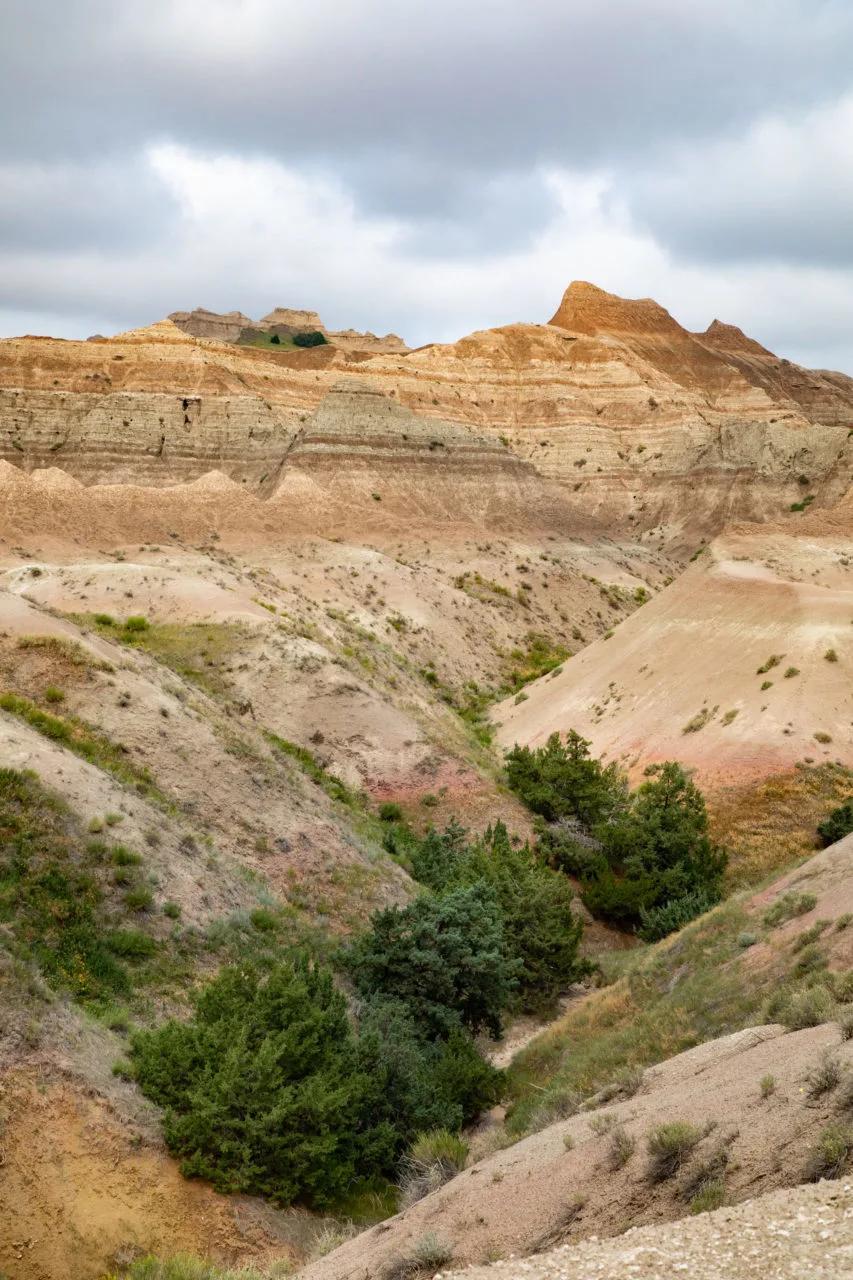
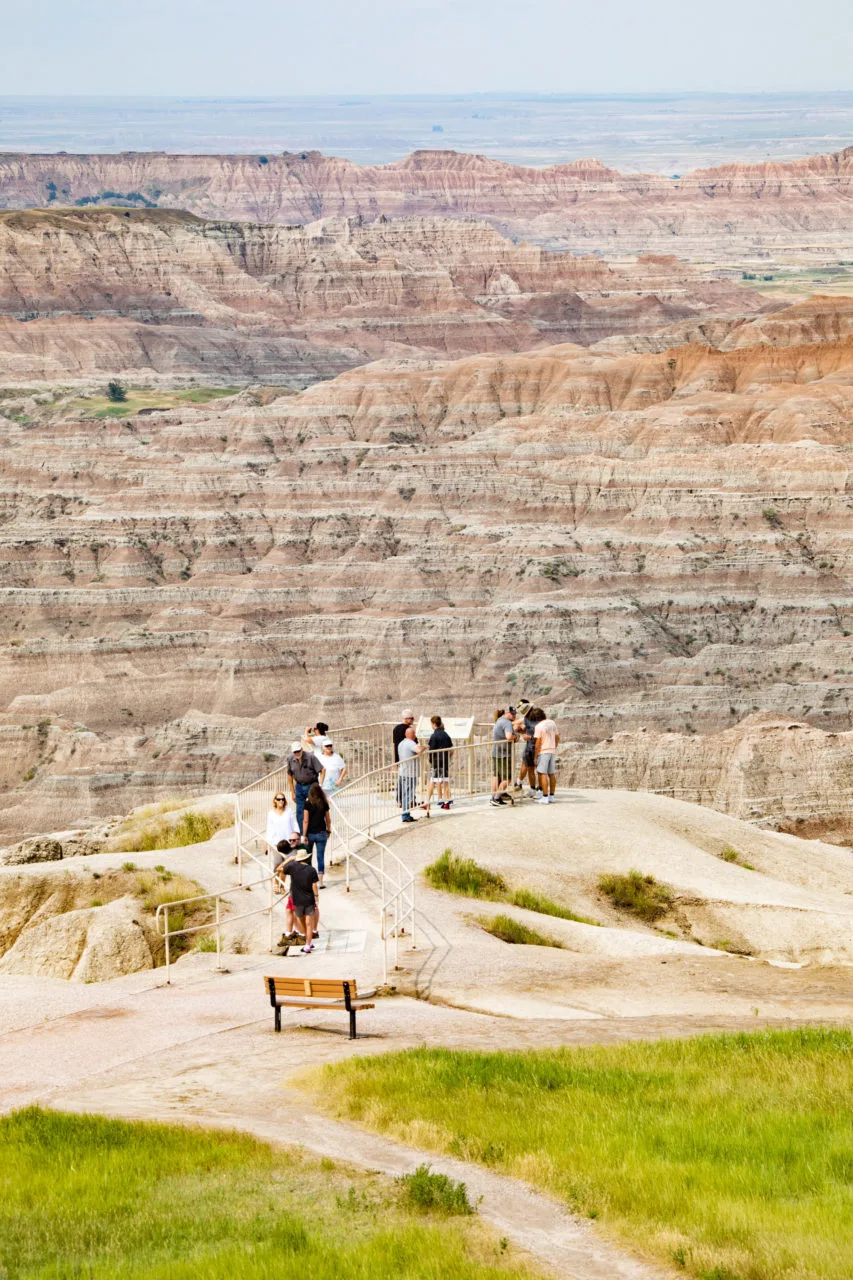
Badlands National Park
#1 reason to go: The amazing layering mountains and hoodoos of the Badlands.
Best time to go: Late summer to early fall is a great time to visit. There are plenty of visitors any day you go, but the drive is spectacular so it’s worth it.
Should families with kids go? Yes! The Badlands and the surrounding area is just fascinating, and there are plenty of places to hike, get out of the car, and enjoy the overlooks.
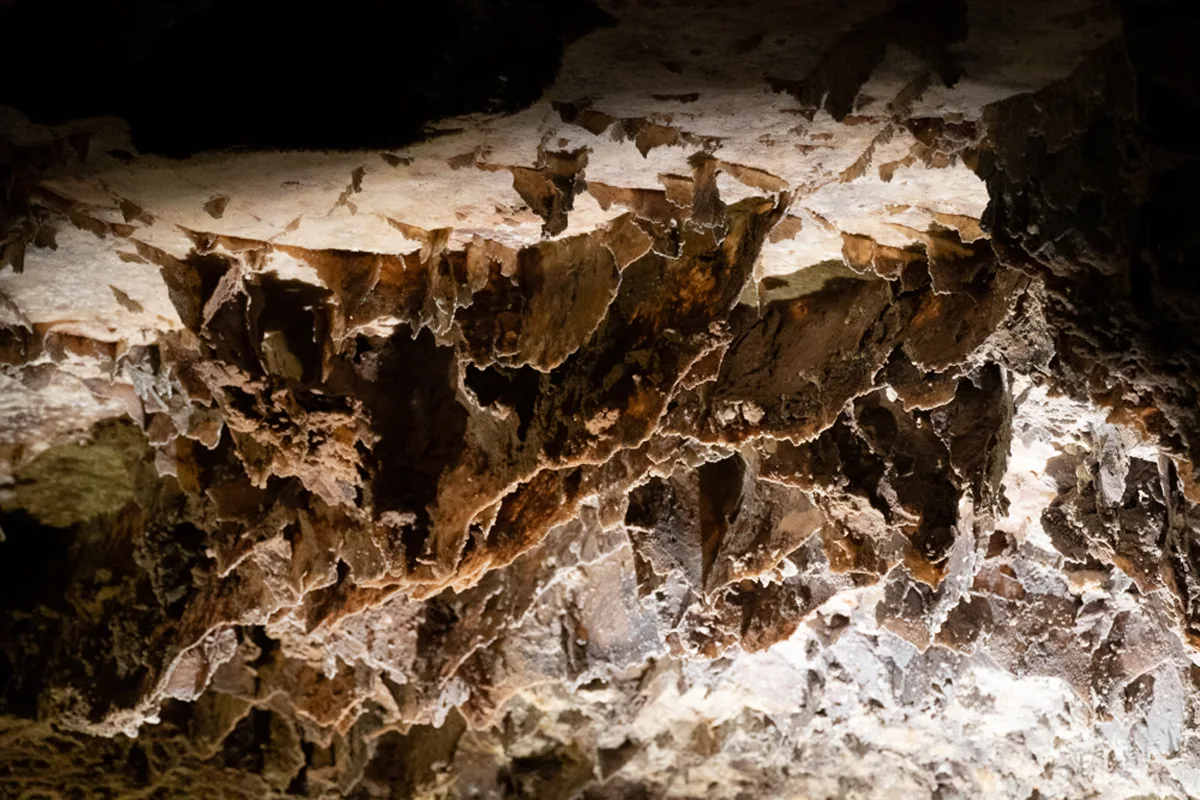
Wind Cave National Park
#1 reason to go: The boxwork formations inside of the cave is the number one reason to visit Wind Cave.
Best time to go: Early summer is the best time to visit before the crowds as the most tours are offered then.
Should families with kids go? Yes! It is good for families with older kids as long as they are not scared of the dark. Kids love the cave formations.
Park Description: Wind Cave National Park is a unique National Park located in southwestern South Dakota. It is one of the longest caves in the world with 149 miles of explored passages. It earned the name “Wind Cave” due to the air that continuously flows through the cave to create a wind-like atmosphere.
No one knows who first discovered this hidden gem, but in 1881, the Bingham brothers became the first official explorers of the cave. You can stay in the nearby small town of Hot Springs or I recommend staying in Custer or Rapid City where there are more hotel options.
The number one thing to do at Wind Cave National Park is to take a cave tour. There are four options of tours to take: The Natural Entrance Tour, the Garden of Eden Tour, the Fairground Tour, and the Candlelight Tour. You will have to show up in person to get tickets, so make sure to get there early to grab a spot.
We opted for the Natural Entrance Tour which was my favorite part of the day. Other things to do at Wind Cave National Park include driving around the park to look for bison or visitors can opt to go for a hike on one of the 30 miles of hiking trails.
Wind Cave has an open hiking policy which means you do not need to stick to the trails. I loved getting to see the bison just roam through the park. No matter what, visitors will find plenty to keep them busy at Wind Cave National Park.
#1 Tip for visiting: Bring a warm jacket and closed toes shoes. Also make sure to get there very early if you want to do a cave tour as the tickets sell out quickly.
Other things to do in the area:
- Mount Rushmore National Monument
- Jewel Cave National Monument
- Badlands National Park
- Crazy Horse Memorial
- Custer State Park
Recommended by: Francesca of Homeroom Travel
Washington
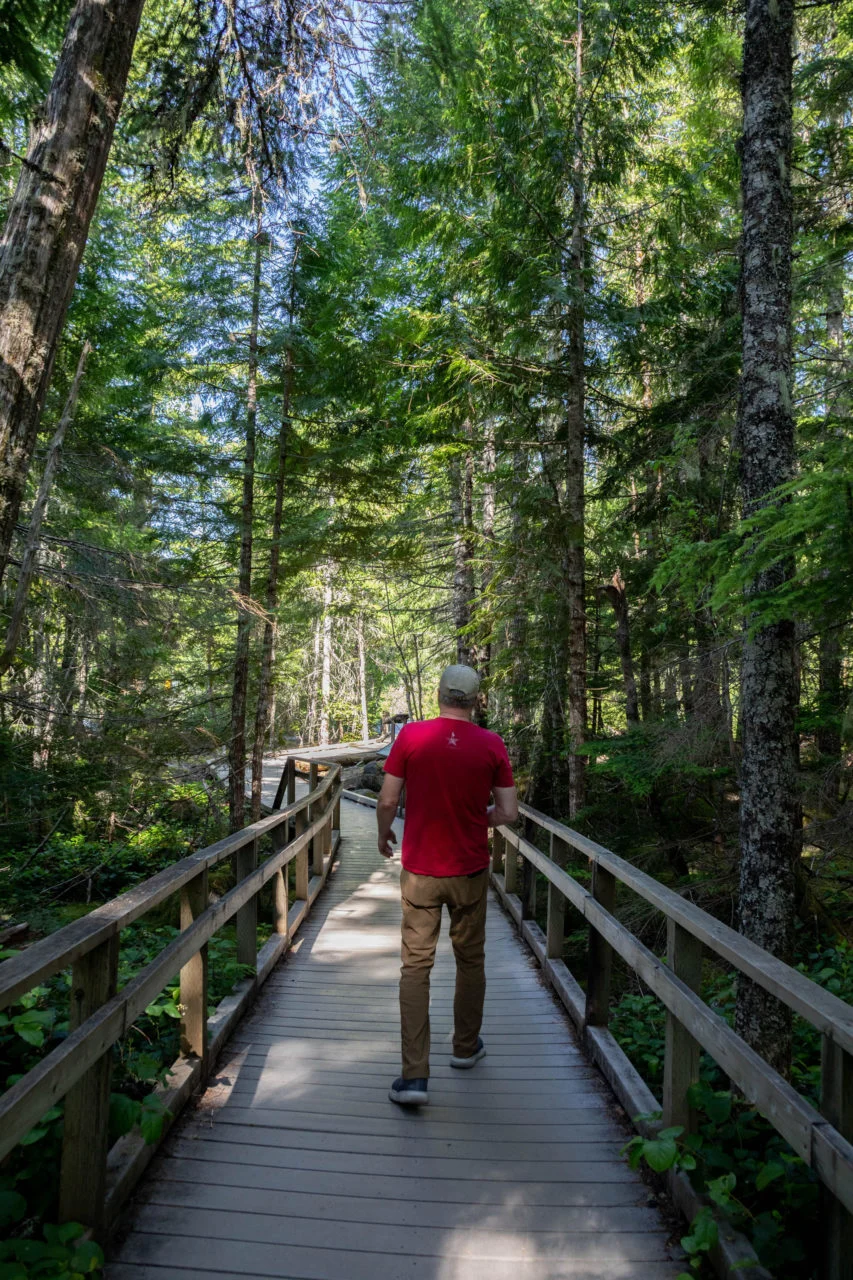
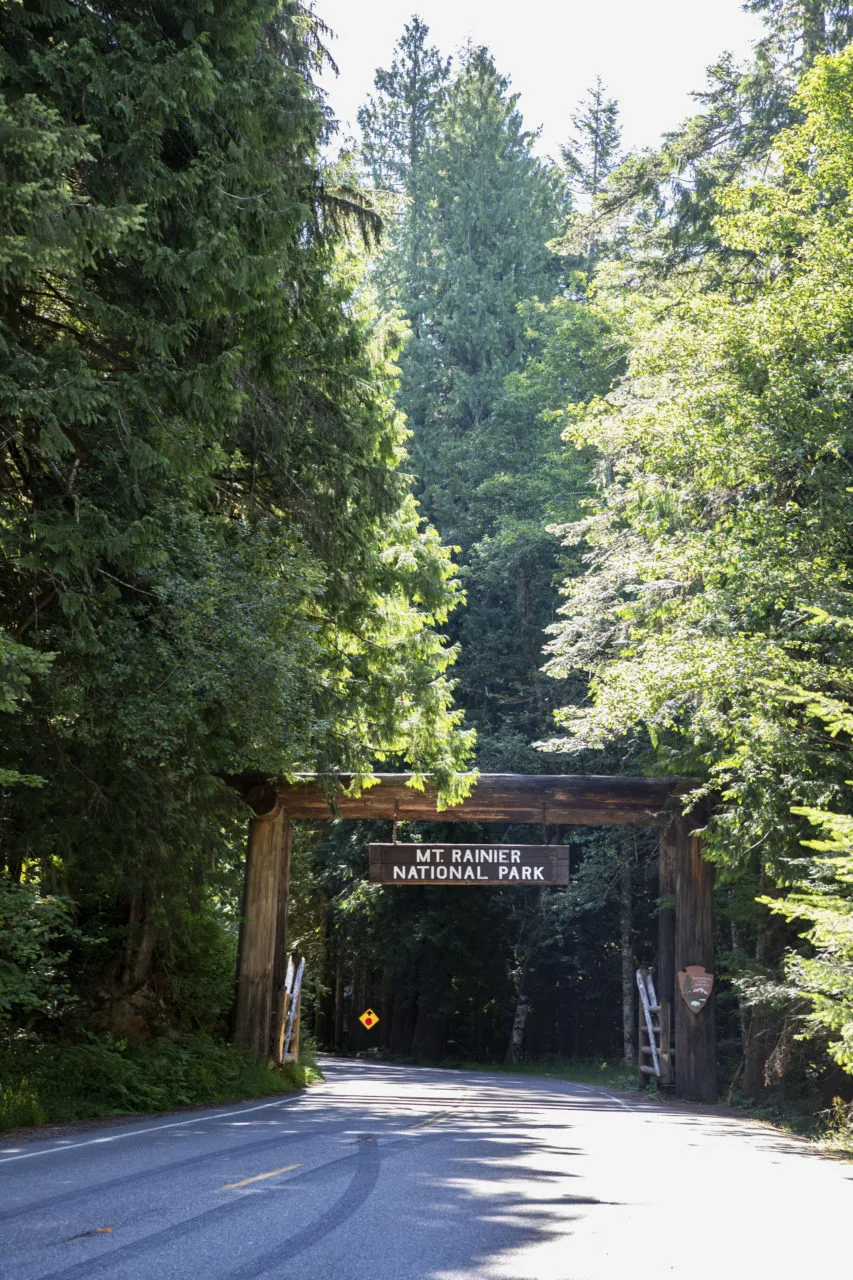
Mount Rainier National Park
#1 reason to go: The wildflower fields in the middle to late summer, and hiking all year long.
Best time to go: July and August are the best time to find the various wildflowers, but really whenever you go you’ll enjoy the views.
Should families with kids go? Yes! There’s something for everyone at Mt. Rainier, and there are plenty of shorter hikes the kids will love.
Mt. Rainier National Park is located about 2.5 hours south of Seattle and not far from the Oregon state border. The mountain is over 14,000 feet and sits majestically in the middle of the park. Views of the mountain change considerably depending on where you are and how low the clouds are sitting.
There are plenty of places to visit within the park. One of the most popular areas is Paradise. With a visitor’s center and lodge (Paradise Inn), the parking lot is huge, but it will still fill up when the wildflowers are in bloom. Take a hike to find great views of the mountain surrounded by the wildflower fields.
Reflection Lake is another popular stop. It’s best viewed during sunrise and sunset. When the lake is still, the reflections of the mountain are spectacular.
Some hikes that you should definitely take are: Grove of the Patriarchs Trail, Silver Falls Trail, Paradise Meadows, and maybe the Skyline trail if you feel up to it.
#1 Tip for visiting: The weather changes dramatically day to day, and sometimes hour to hour. It’s best to dress in layers and wear long pants and shirt, so that you can ward off the mosquitos.
Other things to do in the area:
- Mount St. Helens
- Visit one of the many great towns and cities like Olympia, Tacoma, or even Seattle
- For more camping, check out the San Juan Islands
- For a great road trip, the Cascade Loop takes you to many places in the state of Washington
Recommended by:
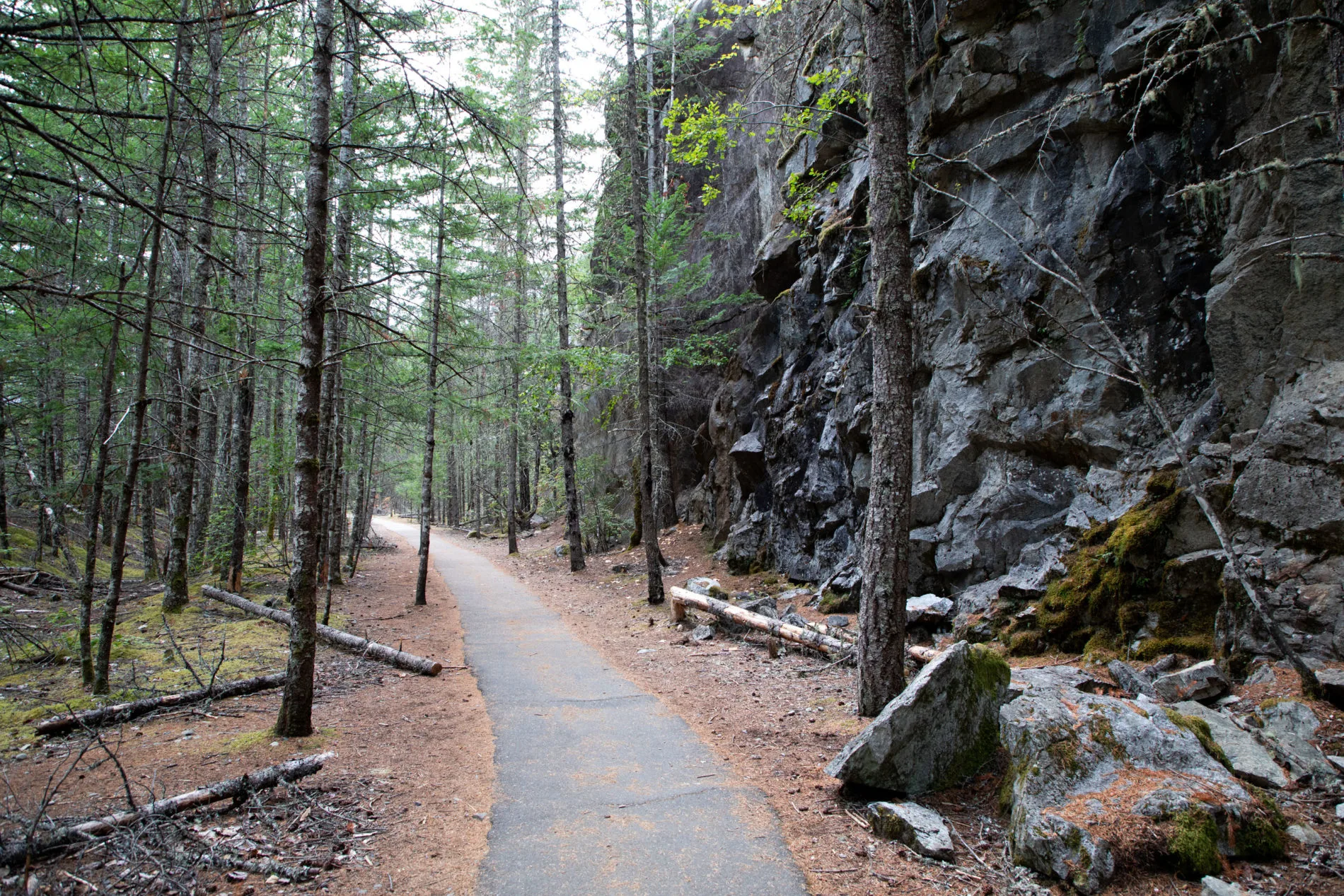
North Cascades National Park
#1 reason to go: The stunning beauty that is the Pacific Northwest is the main reason to go. The many waterfalls coming down from the oft snow-laden mountains are the highlights.
Best time to go: Summer is the absolute best time to go. Because this park is just a little farther out than many, it’s pretty easy to get around and see things without too, too many visitors competing for the same views.
Should families with kids go? Yes! Although the big draw to this park is lots of hiking, if your children enjoy camping, fishing, driving, they will love it.
#1 Tip for visiting: North Cascades is not too far from the Canadian border, and it’s in the middle of many mountains, so the road closes usually from November to April. Even in summer, weather can change rapidly, so it’s a good idea to wear layered clothing. Camping is by far the best way to experience the park.
Other things to do in the area:
- Enjoy the full drive of the Cascade Loop
- Visit some of the wonderful communities on the drive, like Winthrop and Leavenworth
- Don’t miss the amazing Skagit Valley, especially during tulip time
Recommended by: Jim and Corinne
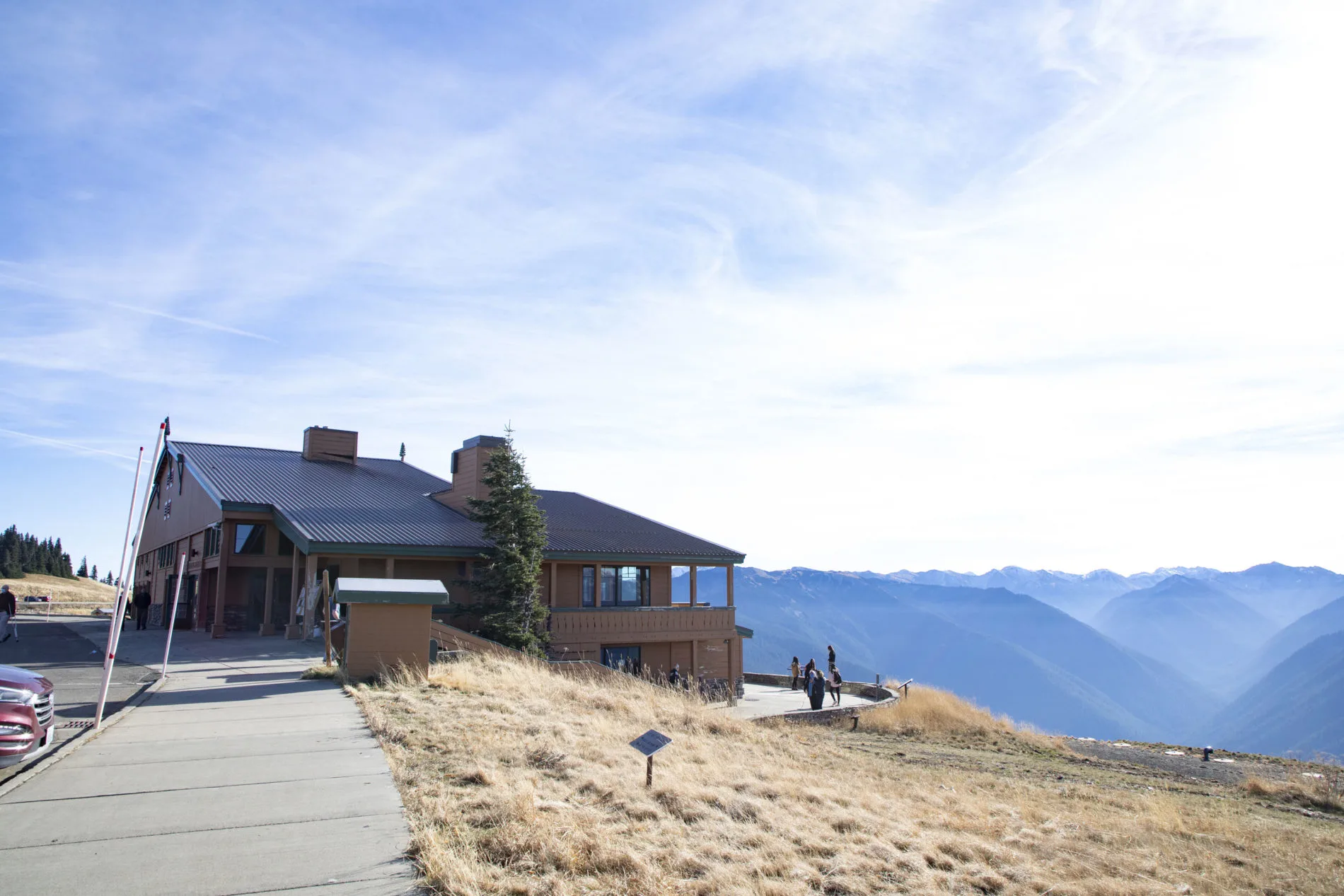
Olympic National Park
#1 reason to go: The wonderful thing about Olympic is that you can visit so many different eco-systems from beaches to rain forests.
Best time to go: Summer is hands down the best time to visit.
Should families with kids go? Yes! The park is amazing for kids. There’s plenty to explore, and everyone loves a beach or better yet, do some tide-pooling.
Park Description: Olympic National Park has so many things to do. Make sure to stay at least a couple of days, exploring all the different areas of the park. Of course one of the most popular things to do is check out all the beaches. There are over 70 miles of beach, and even when it’s busy you can usually find a spot to be on your own.
The Hoh old-growth rainforest is another ecosystem to check out. Walking around these giant trees and moss-covered rocks is somewhat other-worldly. The hiking trails range from very short and easy to much longer, but they are worth it.
Around the Sol Duc area, there is a hot spring to visit. Regardless of time of year, it’s busy, so plan to go early. You can stay as long as you want.
Whether it’s beaching, hiking, boating, wildlife spotting, or just enjoying the beautiful scenic roads, there’s plenty to love about Olympic National Park.
#1 Tip for visiting: Camping is the best way to stay, because the campgrounds in the park are lush and green. There are not many places to eat, except for the lodges if they are open, so it’s a good idea to pack sandwiches and plan on having a picnic while you visit.
Other things to do in the area:
- Washington state is immense, but Olympic is not far from Seattle, Sequim, or Port Townsend. All great places to visit.
- Take the ferry to Victoria, Canada.
Recommended by: Corinne and Jim
Wyoming
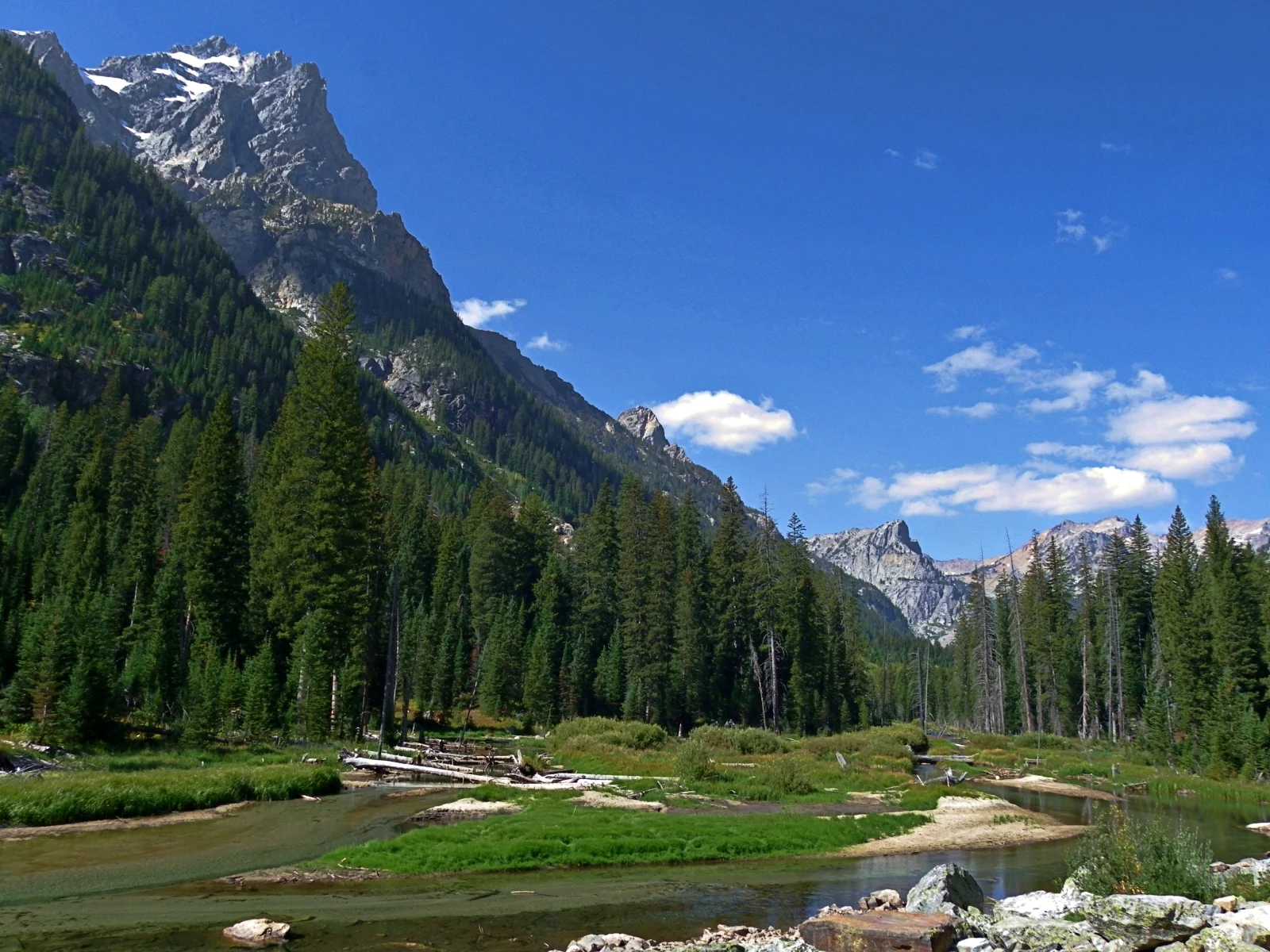
Grand Teton National Park
#1 reason to go: The views of the Teton Ranges are some of the most stunning scenery you’ll ever see.
Best time to go: The best time to go to the Tetons is June – September because this is when the weather is best, there is no snow and everything is open.
Should families with kids go? Yes! Grand Teton National Park is great for families because there are so many things for everyone to do. There are scenic drives, hikes for all levels, lakes for paddling and swimming, and rivers for fishing and floating.
Park Description: The park is centered around the Teton Range. This mountain range rises straight up out of the plains of the Jackson Hole Valley, so there are no foothills, which creates an incredibly dramatic backdrop for all of your adventures in the park.
There are a series of alpine lakes dotted along the base of the mountains, and in front of the lakes winds the appropriately named Snake River. One of the first things I did was the Scenic Loop Drive which goes between the lakes and the river and then loops around on the other side of the river.
Most of the famous views are along this drive, so it’s a great introduction to the park. The views are best in the morning and at sunset because in the afternoon, the sun is behind the mountains, so the lighting is terrible for photos.
My favorite part of Grand Teton National Park is the Jenny Lake area. I camped here at the Jenny Lake campground, and the location was hard to beat. I really wanted to see a moose, so I went on a ranger-led hike to nearby Moose Ponds and was lucky enough to see a bull moose eating grass from the bottom of the shallow pond.
I also did a hike into Cascade Canyon and highly recommend this. You can take a shuttle boat across Jenny Lake and then hike up into the canyon. The trail runs alongside a creek between two peaks. I saw another moose and some river otters, in addition to the amazing scenery.
Another of the classic views of the mountains is from the Moulton Barns on Mormon Row. There are two picturesque historic barns that provide a perfect backdrop for photos. I think they’re the most photographed barns in America!
#1 Tip for visiting: Start your days early. The park is popular and parking is limited, so it is best to get a parking lot early in the morning and then plan your day’s activities in that area.
Other things to do in the area:
- Take the ‘Big Red’ Aerial Tram to the top of a nearby mountain for views over the area.
- Visit nearby Yellowstone National Park – it’s just a few miles away.
- Go whitewater rafting on a nearby section of the Snake River (outside the park) that has Class III rapids.
Recommended by: James from Parks Collecting
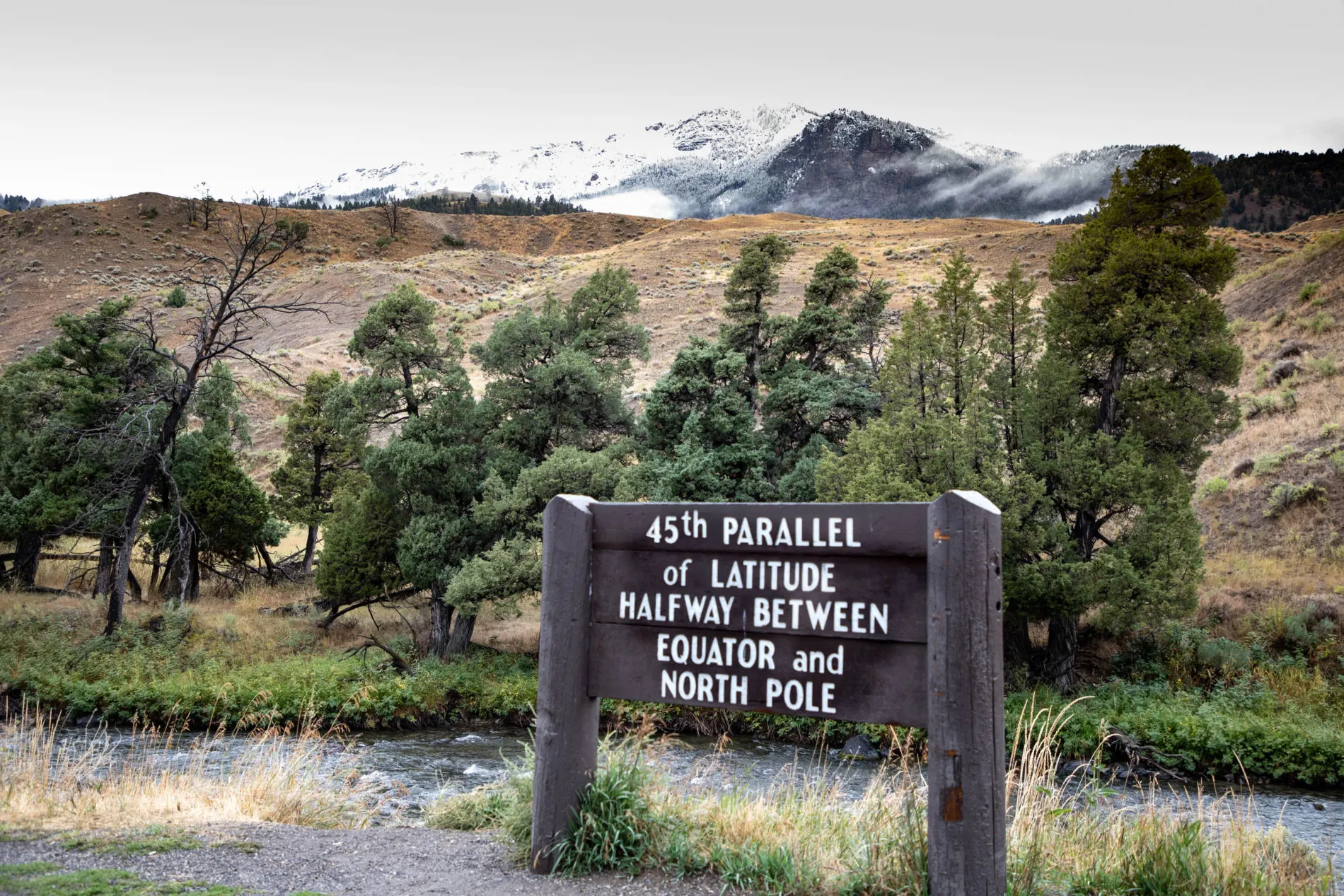
Yellowstone National Park
#1 reason to go: The best reason to visit Yellowstone is Old Faithful and the other geysers and geo-thermic activity in the park.
Best time to go: May through September is great, but of course the crowds are heavier in the summer when the kids are off from school. If you can go to Yellowstone in the fall, it’s gorgeous and easier to see the wildlife.
Should families with kids go? Yes! There’s plenty to do for kids. The visitor’s centers have great exhibits and movies about the park, as well as spotting wildlife and gasping at Old Faithful. They’ll love it.
Park Description: One of the largest parks in the country, Yellowstone is mostly in Wyoming, but it does cross over into Montana and Idaho. The park’s landscape is one of a kind. The stunning geo-thermal activity makes it a great schoolroom and place to take stunning photographs.
Some of the more popular parts to visit are Old Faithful, Mammoth Falls, Grand Prismatic Spring, LaMar Valley, and the many turn outs along the road. The last time we visited was in September and the snows were already gathering on the mountains. We hit every kind of weather, and the wildlife was more than abundant. In the fall, the elk begin their rutting season, and to hear a stag yell his mating call is amazing.
#1 Tip for visiting: Yellowstone is one of the most visited parks, and therefore all accommodations in the park fill up fast, even the campgrounds. Make reservations as early as you can.
Other things to do in the area:
- Drive a scenic byway near or to the park: Beartooth Highway, Chief Joseph Scenic Byway, or the Mesa Falls Scenic Byway.
- Visit a close-by western city with all its charms: Cody or Jackson, Wyoming, Bozeman or Billings, Montana, or Island Park, Idaho.
Recommended by: Jim and Corinne – Join our private Facebook group – Streets and Eats!
Author Bio – Corinne is an avid camper and traveler. She’s been to all 50 of the US states and has four more Canadian provinces to visit. However, she’s not stopping yet. There’s always more to see of this great continent! Corinne loves local foods, getting outdoors, landscape photography, and road trips.

